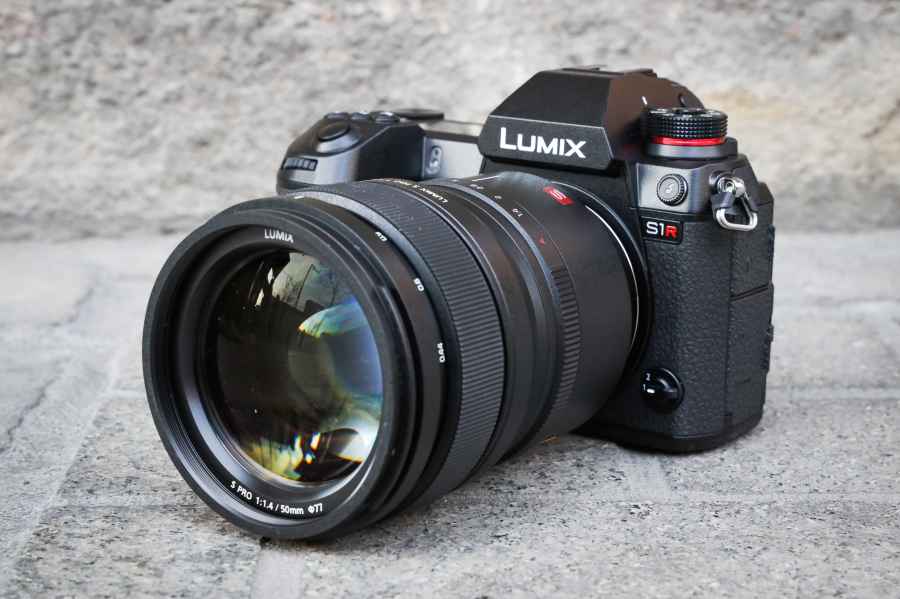Panasonic Lumix S1R: At a Glance
- £3,399.99 (body only)
- 47.3MP full-frame CMOS sensor
- Venus Imaging engine
- ISO 100-25,600 (expandable to ISO 50-51,200)
- Dual I.S. image stabilisation system
- 5.76-million-dot OLED EVF
- 4K 60p/50p video recording
- Dual card slot (XQD& SD)
- Weatherproof construction
What a difference a year makes. This time twelve months ago Sony had the full-frame mirrorless market virtually all to themselves and both Nikon and Canon were yet to strike back with their respective Z 7/Z 6 and EOS R cameras. As the full frame mirrorless market started to build serious momentum, rumour had it that Panasonic might also join the party. This initially came as a surprise after showing little interest in taking the full-frame route before and being fully committed to its Micro Four Thirds system for more than a decade. So why the change and why now?
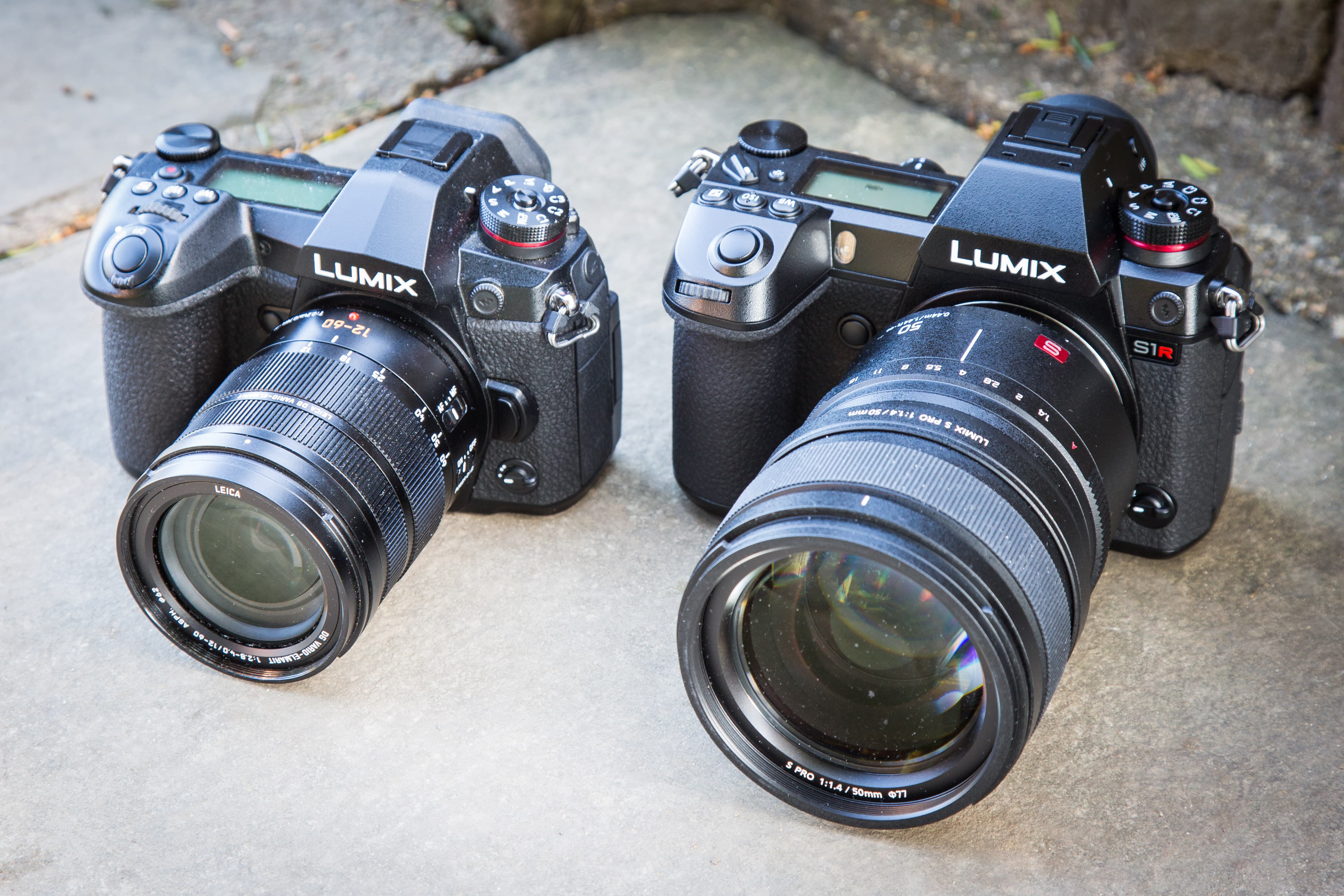
The Panasonic S1R (right) with the Lumix S Pro 50mm f/1.4 is a powerful combination, but at a fraction under 2kg it’s not a lightweight pairing. On the left is the Panasonic Lumix G9
While there still is and will continue to be demand for smaller and lighter cameras, Panasonic clearly feels the need to satisfy more than just the general consumer by offering a full-frame system of its own. By forming the ‘L-Mount’ Alliance’ with Leica and Sigma, Panasonic has set its heart on developing a desirable, professional series for those who haven’t yet found their perfect full frame camera and photographers who are open to the idea of joining a new full frame system. But is Panasonic simply after a share of the full frame market or are they onto something special with their new S-series?
Panasonic Lumix S1R: Features
The Lumix S1 and Lumix S1R share an identical body design, but employ different sensors to cater for different audiences. The 47.3-million-pixel CMOS sensor located behind the S1R’s large diameter L-mount doesn’t break the 50-million-pixel barrier, but its high 8368×5584 pixel count places it above its high-resolution rivals such the 45.7MP Nikon Z 7 and 42.2MP Sony A7R III.
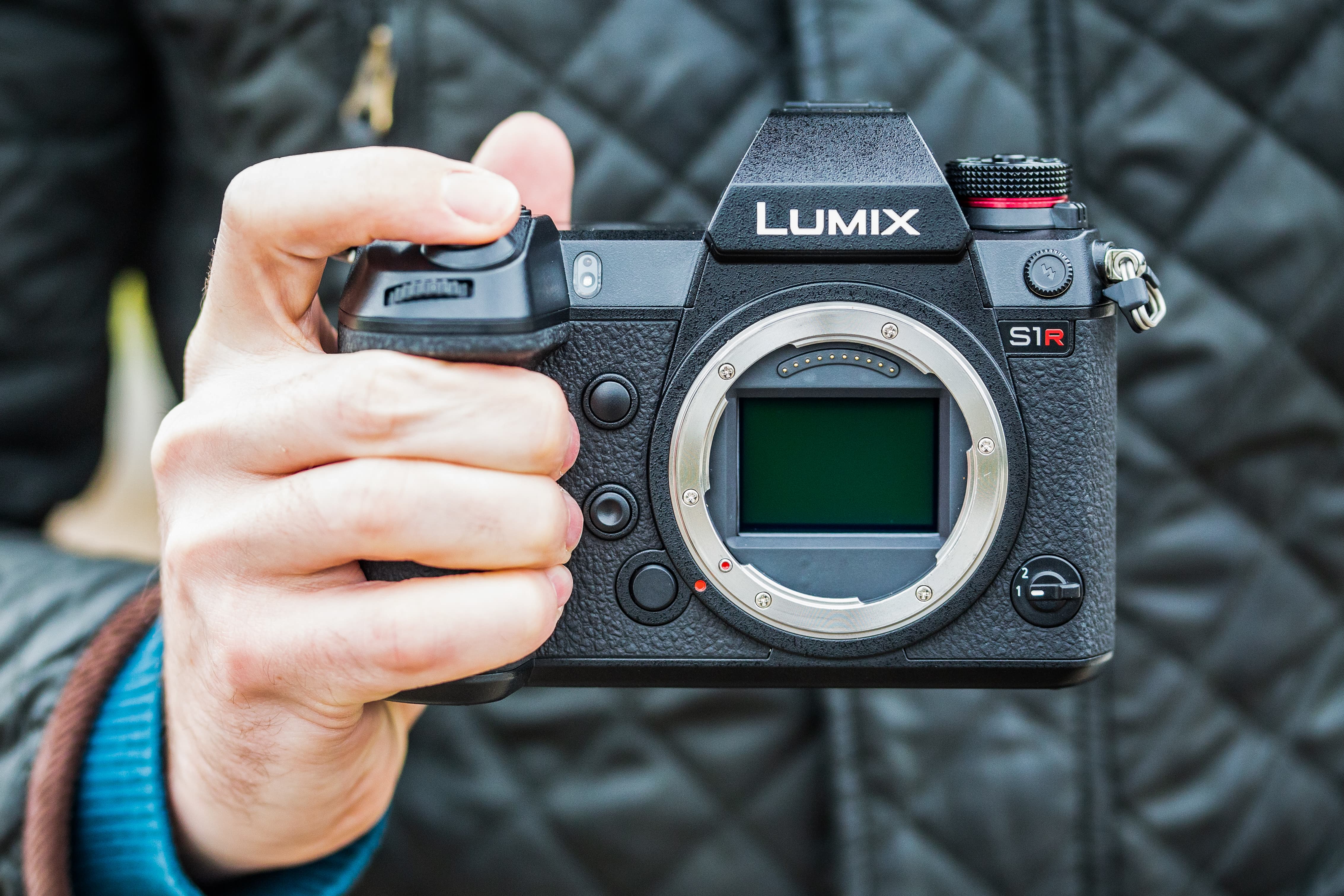
The Lumix S1 and S1R are Panasonic’s first models to use the large diameter L-mount
The high-resolution possibilities don’t end here. Enormous 187-million-pixel images can be produced using its high-resolution mode, which stitches together image information recorded from eight exposures taken as the in-body image stabilisation system makes subtle adjustment to the position of the sensor. Panasonic has refined this mode too, introducing Mode 2 that’s designed to minimise motion blur associated with moving objects such as greenery landscape scenes. More on this later in the review.
The S1R’s standard sensitivity range of ISO 100-25,600 is expandable to ISO 50-51,200 equivalent, and with Panasonic’s new Venus Engine processor on board it can shoot up to 9fps with fixed autofocus (AFS), or 6fps using continuous AF (AFC). If this isn’t fast enough there are the S1R’s 6K/4K Photo modes to fall back on. These can be used to extract 18-million-pixel JPEG images at 30fps, with 4K Photo offering sequences at 30fps or 60fps at a lower 8-million-pixel resolution.
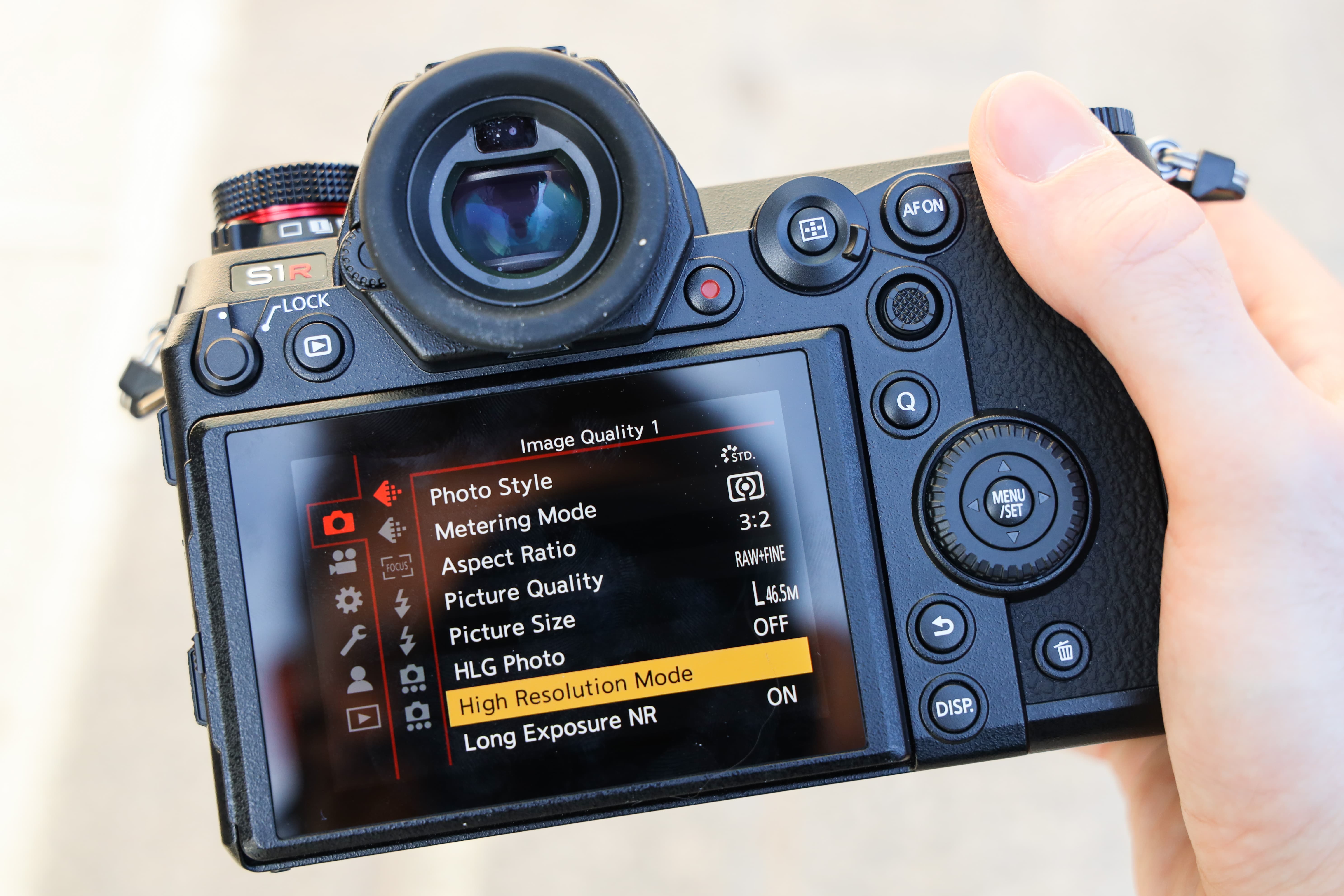
The rear screen displays a crisp and clear image. Note the more advanced two-tier menu, which does take a bit of getting used to coming from a Panasonic G-series camera menu system
Switching from the mechanical shutter (60secs-1/8000sec) to the electronic shutter (60secs-1/16,000sec) permits silent shooting, with a direct silent mode setting also available from the menu. Another familiar feature is the 5-axis Dual I.S II image stabiliser, which offers 6 stops of compensation to counteract camera shake when shooting stills or movies. It works in the same way as the Dual I.S II system found inside the Lumix G9, combining 2-axis stabilisation from the lens with 5-axis stabilisation in the camera. Added to this, Panasonic has introduced what’s called an I.S. Status Scope to help photographers identify camera shake easily by displaying a graphic interpretation of the vibration.
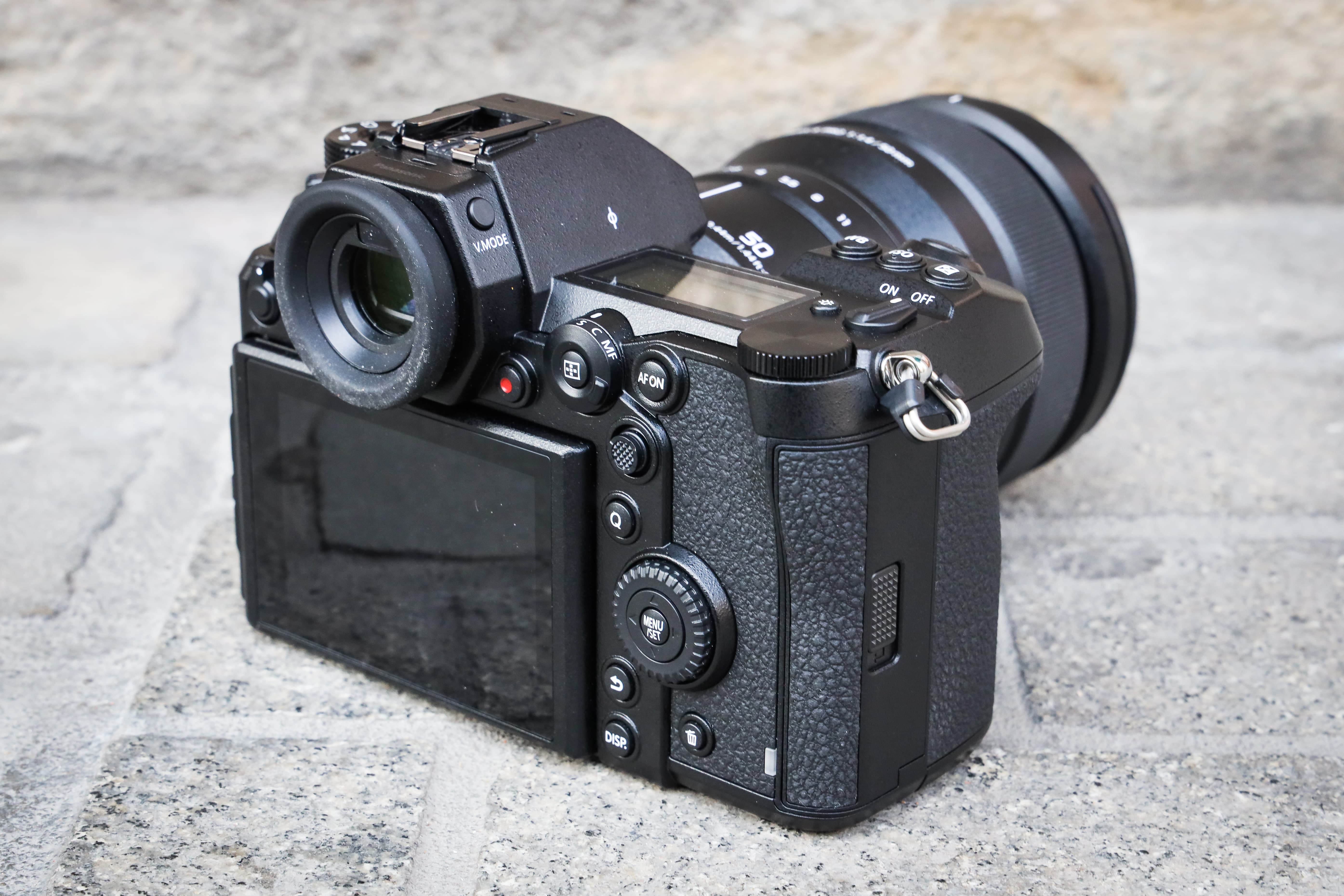
The S1R has a nice textured grip, which extends to the rear of the camera. The circular eye cup that is supplied can be replaced with the DMW-EC6 eyecup, which offers a full 360-degrees of rotation with click stops every 90-degrees
For autofocus, Panasonic has used its formula of contrast detection and Depth From Defocus (DFD) technology again, with the Venus Engine, CMOS sensor and Lumix S lenses all communicating at a rapid 480fps. The lock-on acquisition speed of autofocus (0.08secs) isn’t as quick as the Lumix G9 (0.04secs), but the focus tracking has been refined with ‘advanced artificial intelligence technology’ that can now detect the difference between humans, cats, dogs and birds. The camera’s low light performance also boasts an impressive AF working range of -6EV to 18EV.
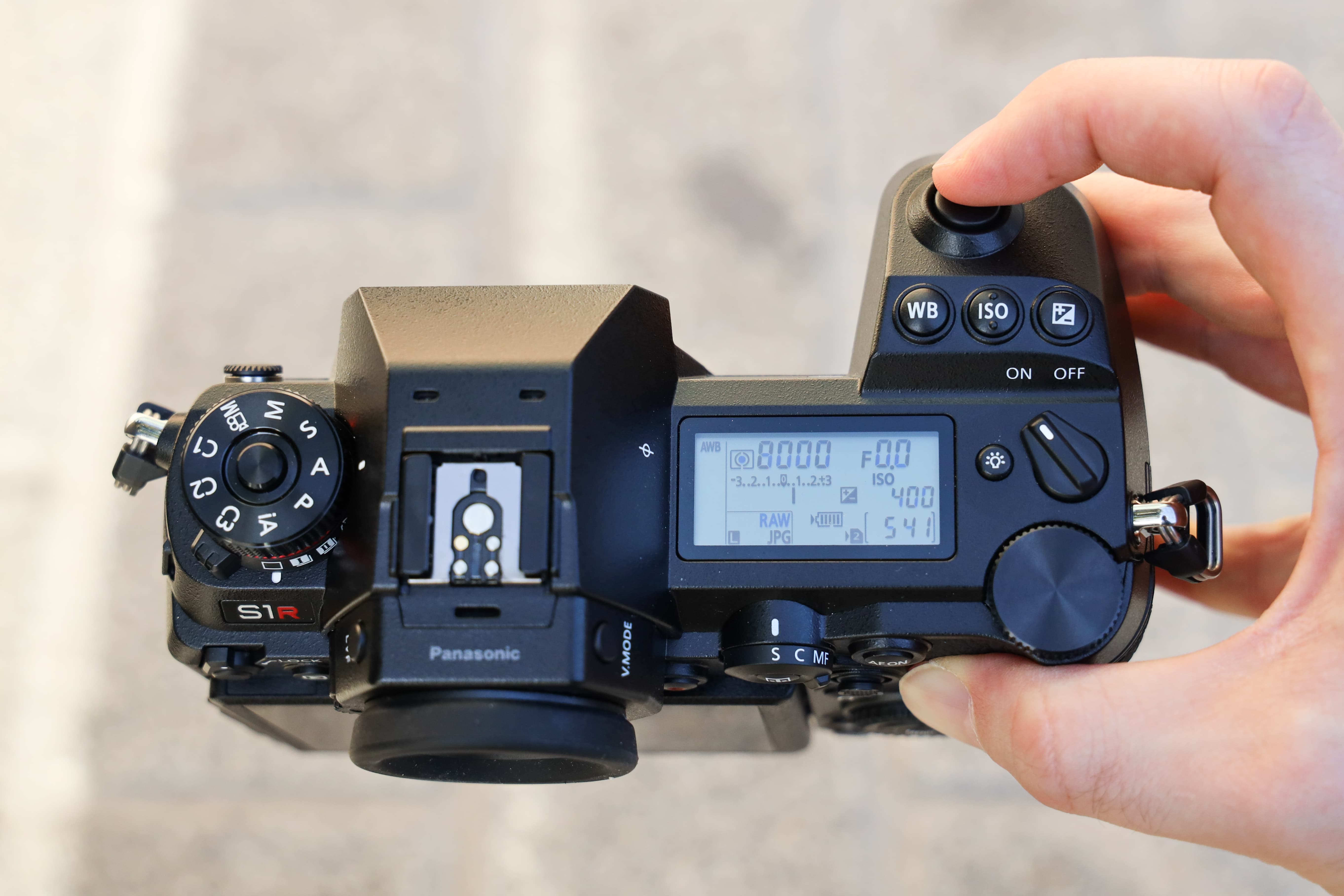
This view clearly shows the rather peculiar position of the on/off switch. It’s not as easy or as intuitive to turn on and off as cameras that merge the on/off switch with the shutter button
The S1R presents 4K video recording at 50/60p, with high-speed video options to record 2x slow motion at 60fps in 4K and settings down to 6x slow motion in Full HD at up to 180fps. The S1R’s sister model, the Lumix S1, offers better the better video spec for moviemakers, allowing full-pixel readout using the full width of the sensor at 30p and 4K 60/50p 4:2:0 8 bit recording direct to an SD or XQD-card.
Panasonic will also provide a paid-for software key later this year for the Lumix S1. This will unlock the option to record 4K 60/50p 4:2:2 10 Bit via HDMI-output and 30/25/24p in 4:2:2 10 Bit internal, with V Log included.
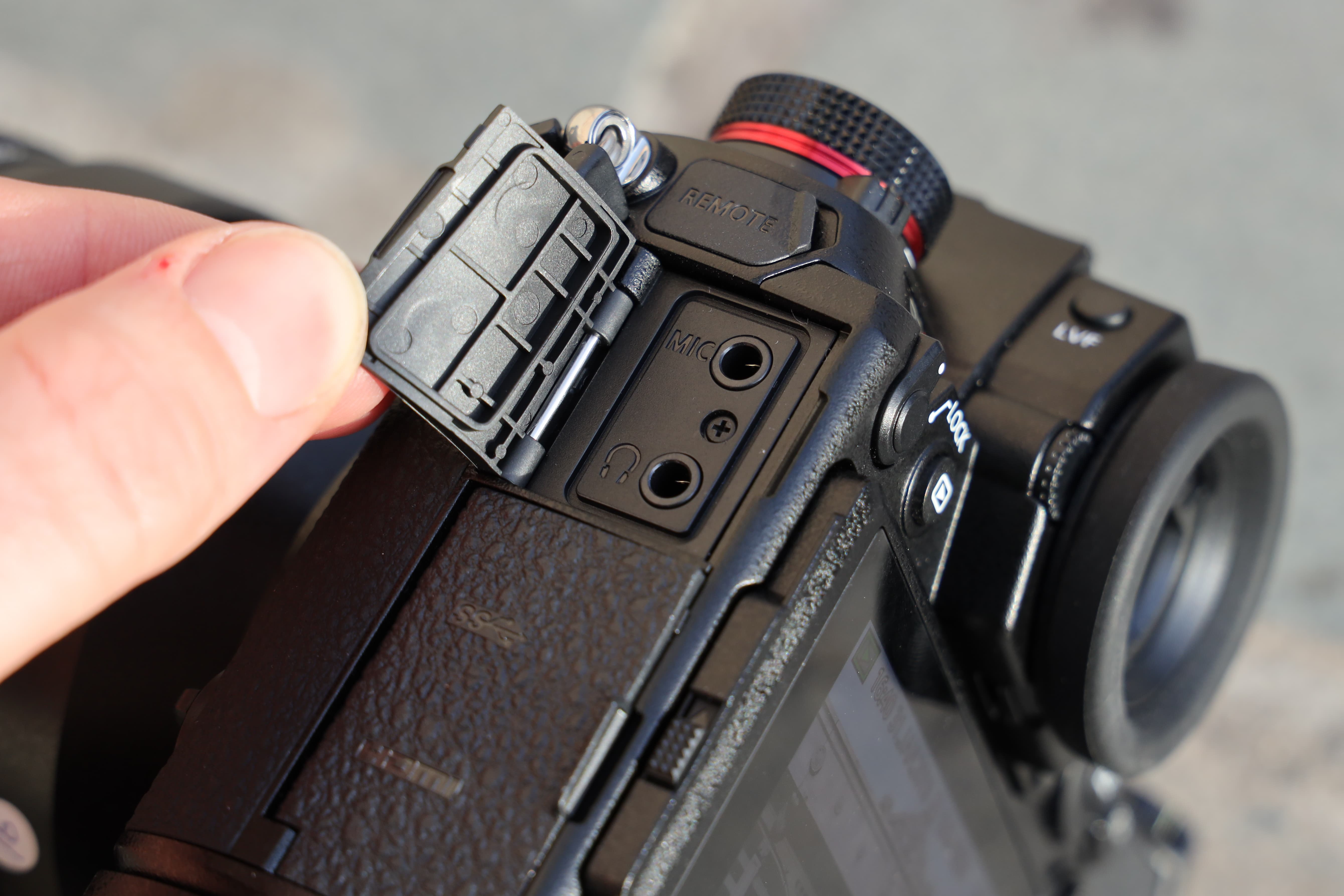
Below the mic socket and headphone port are the S1R’s USB-C and HDMI out interfaces. The 2.5mm remote port is located above and has its own rubberised flap
Back to the camera in question, the Panasonic Lumix S1R provides a 2.5mm remote port, with a 3.5mm mic socket and headphone port located behind a separate hinged door. Advanced audio quality is available too using Panasonic’s optional DMW-XLR1 microphone adapter, allowing pro-spec microphones and XLR input sources to be connected. It’s good to see the S1R providing dual-card slots (SD and XQD) and it’s UHS-II compatible too. Bluetooth and Wi-Fi connectivity options are also present and let you pair and transmit images to smartphones running Panasonic’s new Lumix Sync app that’s available for iOS and Android.
Panasonic Lumix S1R: L-mount lenses
It’s early days for the S-series. Although Panasonic only currently offers three lenses, comprising the Lumix S Pro 50mm f/1.4 (£2,299), Lumix S Pro 70-200mm f/4 O.I.S (£1749) and Lumix S 24-105mm f/4 MACRO O.I.S (1,299), we can expect many more S-series lenses based on the Leica L-mount to arrive in the coming months and years.
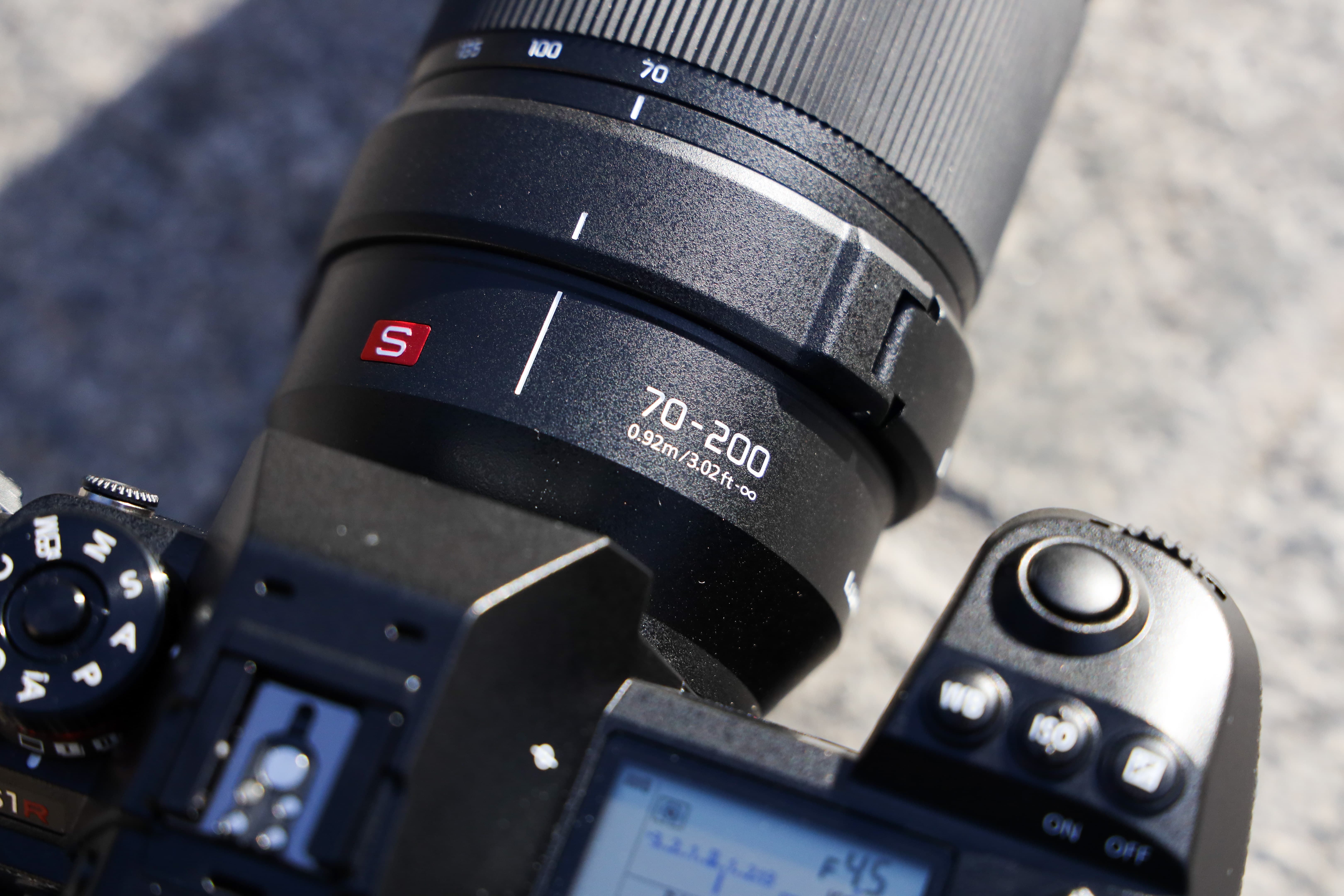
Panasonic currently has a pair of S Pro lenses in its lineup – the ludicrously sharp Lumix S Pro 50mm f/1.4 and the Lumix S Pro 70-200mm f/4 O.I.S, which features 23 elements in 17 groups
The beauty of the ‘L-Mount’ Alliance’ is that photographers have the flexibility to mix and match Panasonic, Leica or Sigma cameras with L-mount lenses from each manufacturers product portfolios. Sigma has been forthcoming with their plans to support the L-mount, making it known that 11 of their primes from its high-quality ‘Art’ line will be optimised to work with L-mount cameras such as the S1R, covering focal lengths from 14mm to 135mm. As well as these lenses, Sigma will also make a new mount adapter (MC-21). This will allow Sigma SA mount and Canon EF mount lenses to be used with L-mount cameras. Better still, it’ll work with the auto crop function, enabling APS-C format lenses to be used with a full frame sensor too.
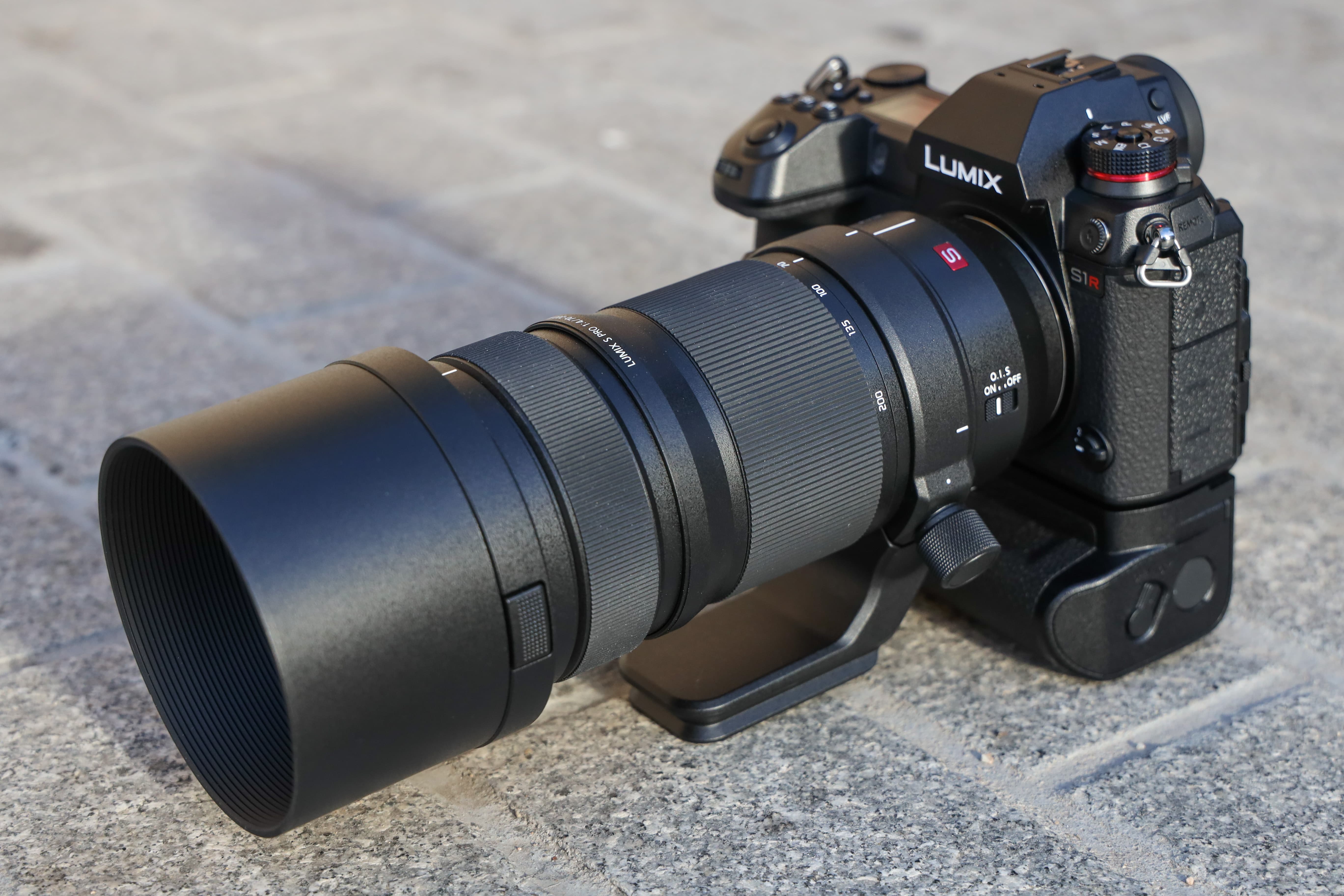
The Lumix S1R with the Lumix S Pro 70-200mm f/4 O.I.S and battery grip attached is a sizeable and heavy combination, weighing over 2kg on the scales
While the L-mount might not be supported by the wide range of lenses that other full frame mirrorless systems offer at present, the future of the S-series and L-mount certainly looks bright.
Panasonic Lumix S1R: Build & Handling
A lot has been reported about the size of Panasonic’s S-series models. Compared to Canon, Nikon and Sony who’ve made a clear effort to keep their full frame mirrorless offerings as small and lightweight as possible, Panasonic’s approach is quite different. The S1R is the largest full frame mirrorless cameras we’ve tested since the Leica SL.
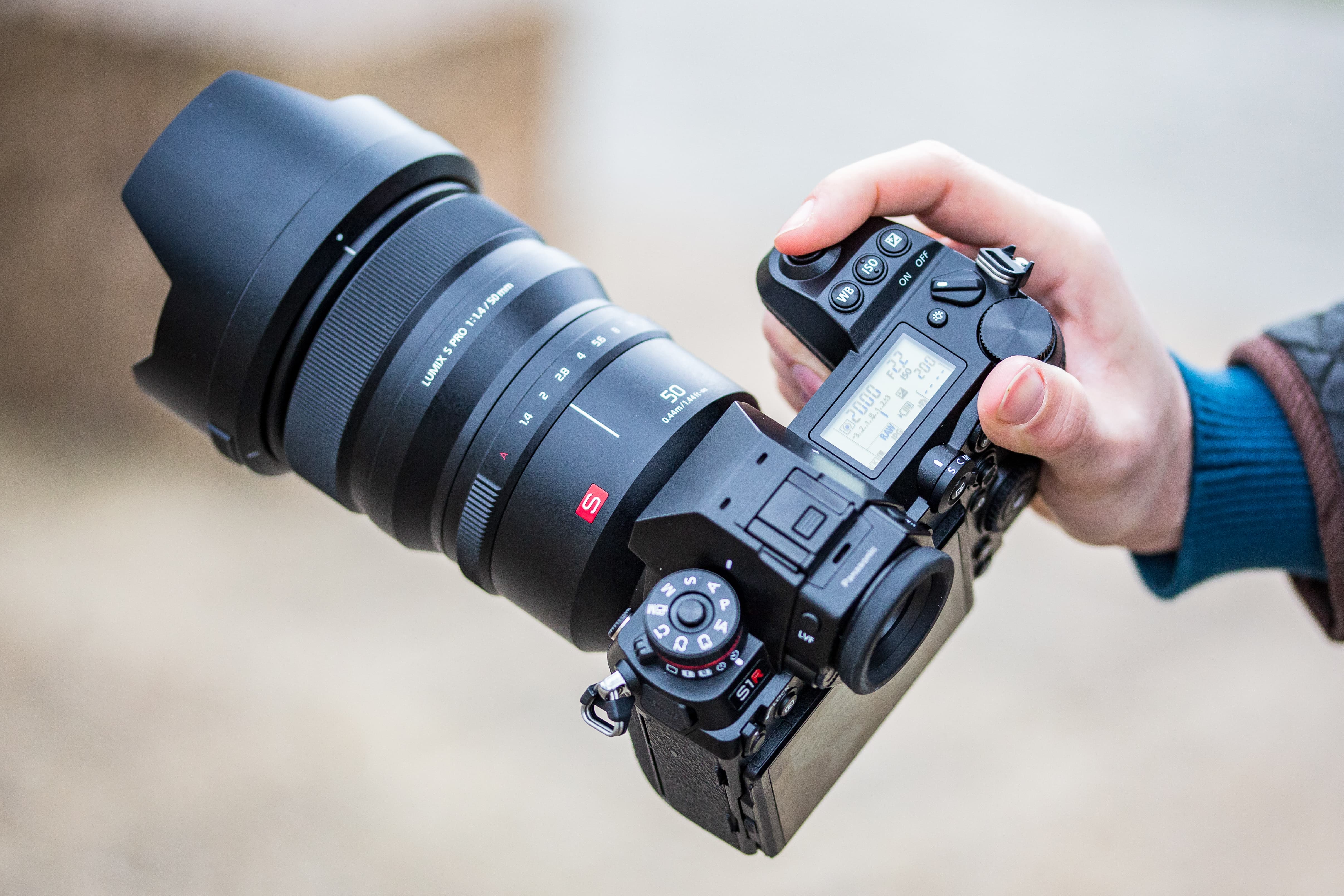
Don’t let this image fool you. The S1R is a weighty beast and can’t be supported single handed for long with a big prime lens like the Lumix S Pro 50mm f/1.4 attached. The Lumix S Pro 50mm f/1.4 is just £50 less than the Canon RF 50mm f/1.2L USM at the time of writing
It’s quite a beast in the hand and doesn’t give you an instant impression of having a size or weight advantage over many full frame DSLRs. The body on its own weighs a substantial 1020g and when this is paired with a pro-spec lens such as the Lumix S Pro 50mm f/1.4 (955g), it’s actually heavier than some full-frame DSLR and lens combinations. The Nikon D850 (1005g) with the excellent Sigma 50mm f/1.4 DG HSM (815g) is just one example of a setup that weighs less.
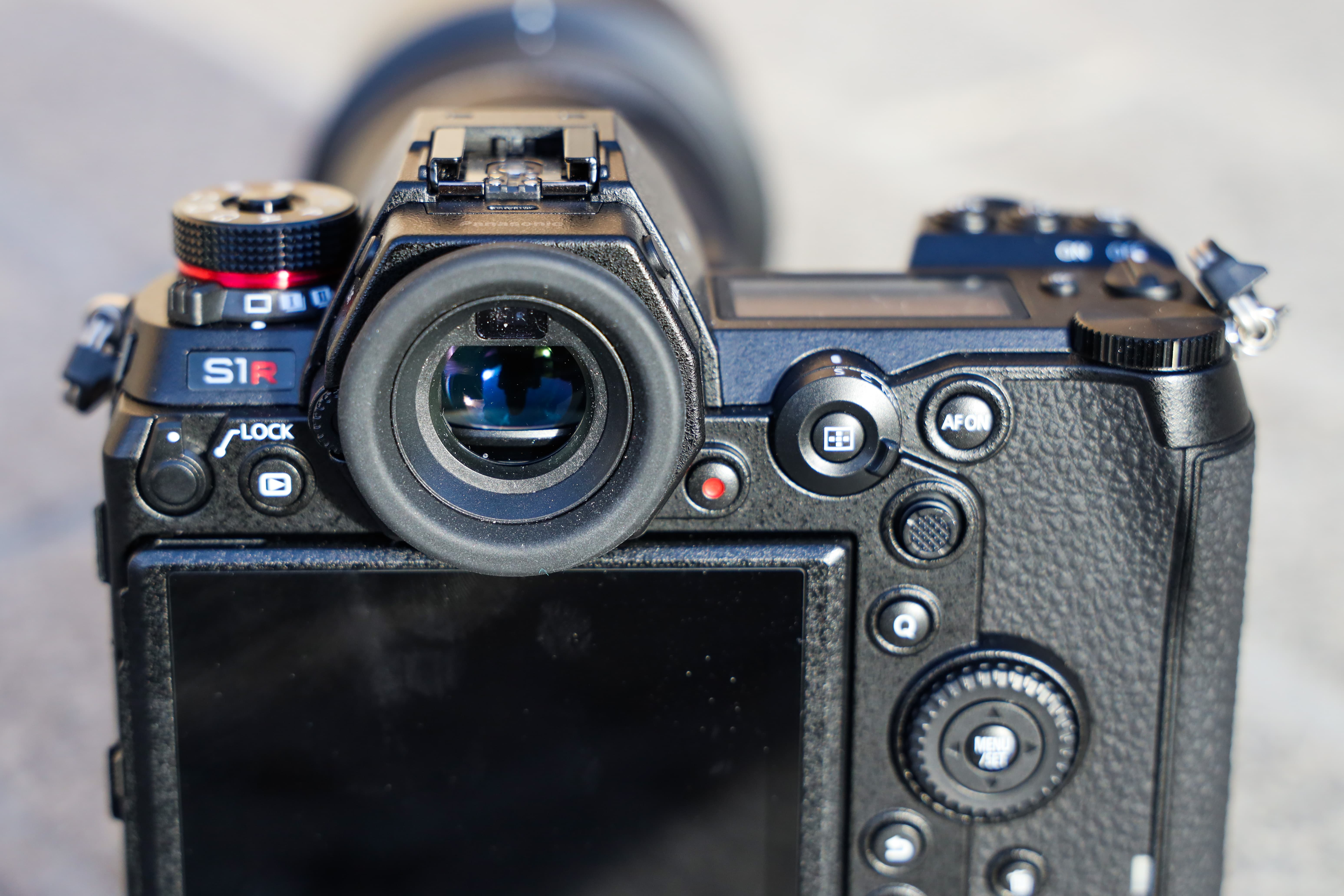
A rear view of the S1R’s control layout. The joystick is well positioned to the right of the screen rather than above it like on the Panasonic Lumix G9
One theory for making the body big is to ensure the S-series is quite different from Panasonic’s G-series cameras. When you inspect the S1R closely though, you realise it’s closely related to the Lumix G9, with its top plate LCD, large handgrip and general arrangement of buttons and dials sharing much of a likeness to its G-series cousin. The size of the body does present a few benefits. There’s ample space for large buttons, you get a rectangular top plate LCD display and a 3050mAh battery, which supplies enough power for 1100 images in its power save LVF mode. The battery level can also be set to show its remaining capacity as a percentage.
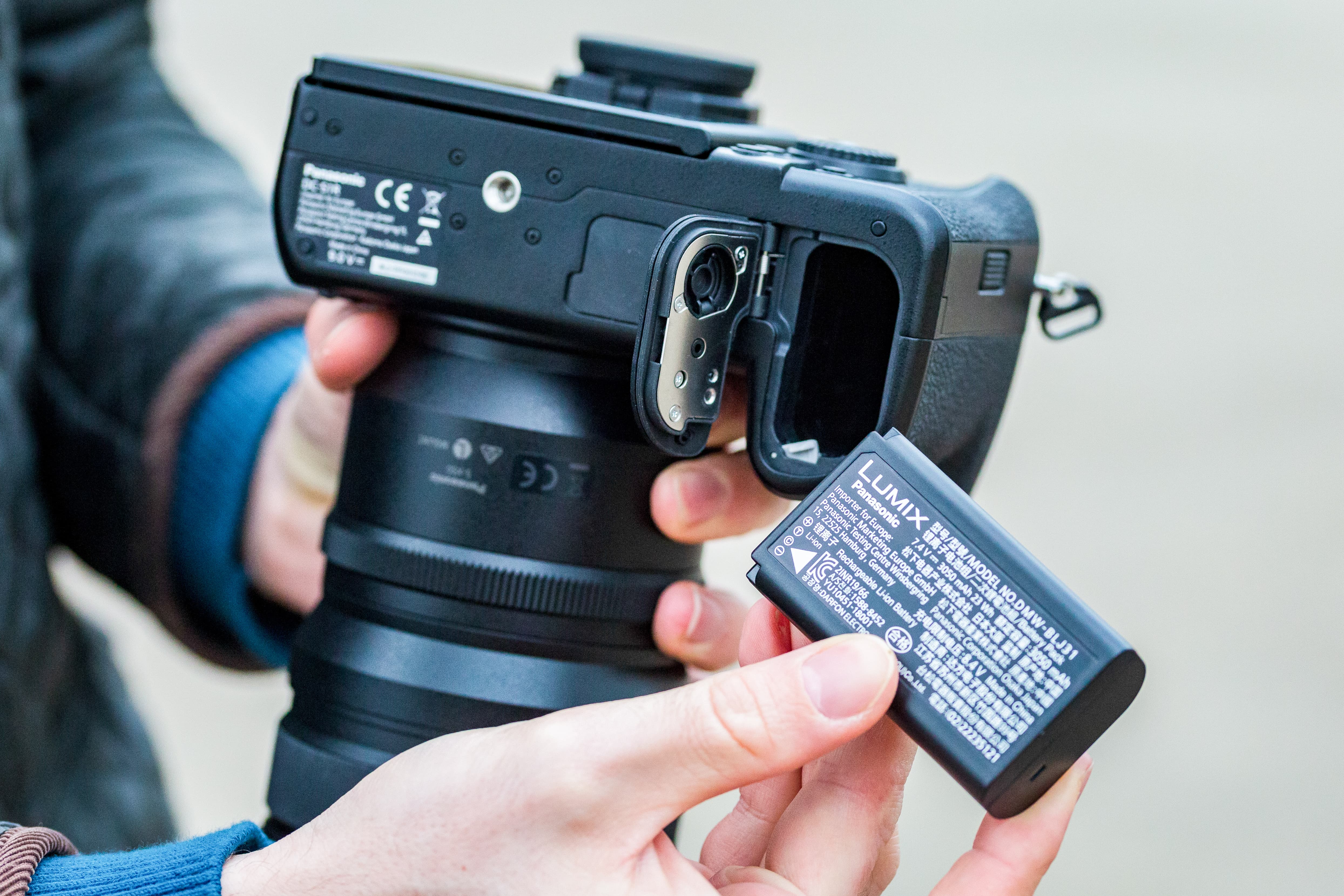
The large 3050mAh DMW-BLJ31 battery supports charging via USB-C. A charge message on the S1R’s top plate is clearly displayed and tells you when the battery is full
The lockable mode dial has a switch around its base, giving users the option of customising burst settings to drive mode I or II, including the option to setup and shoot using the 6K/4K photo modes. Between these drive modes and the self-timer mode there’s the option to create a time-lapse or stop motion animation in-camera. On the opposite side of the top plate, white balance, ISO and exposure compensation all get their own dedicated buttons, but rather than uniting the On/Off switch with the shutter button, it’s shifted further back. One reason for this is due to the front dial being positioned ahead of the shutter button, rather than behind it as on the Lumix G9.
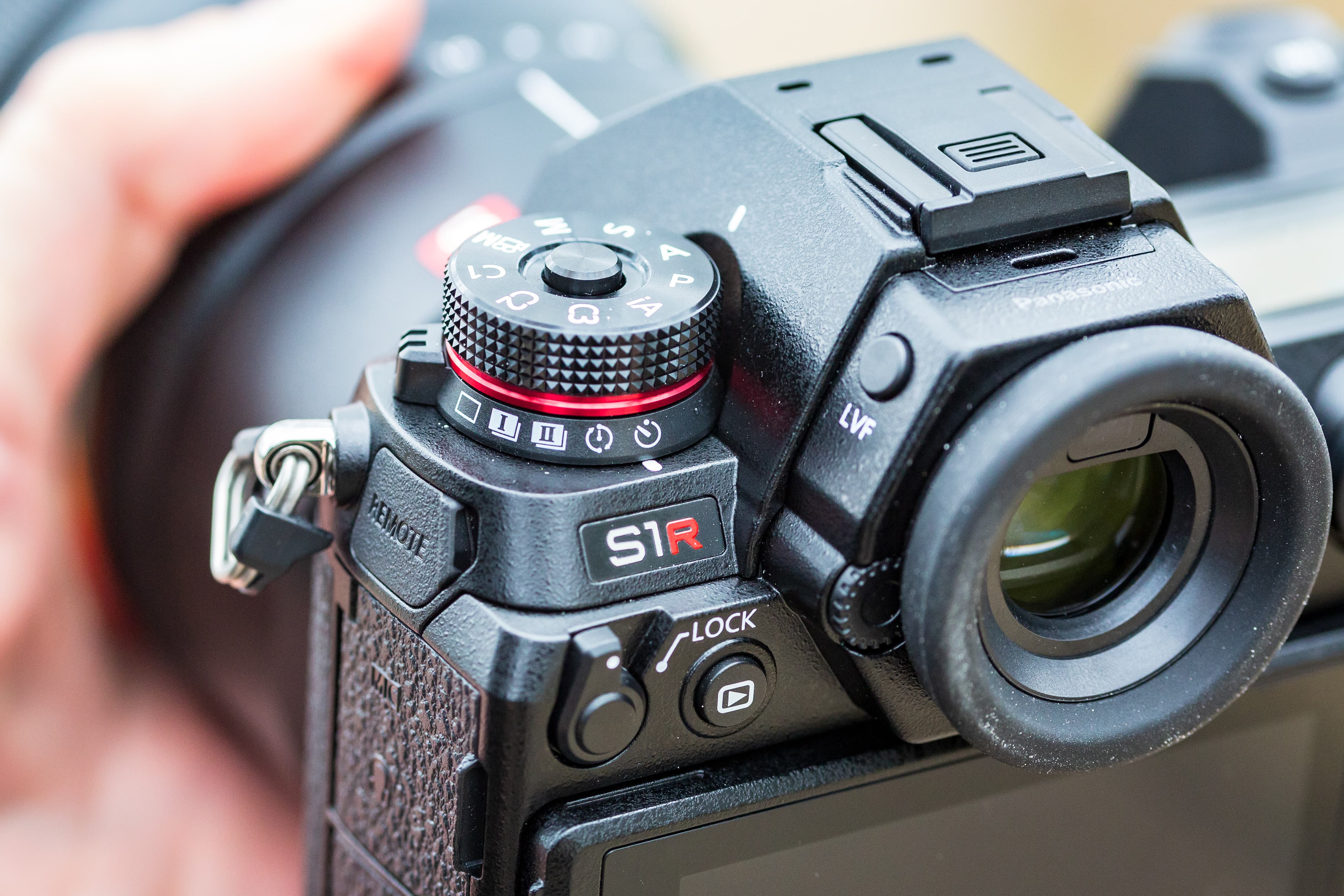
Just like the Lumix G9, the S1R has a switch directly below the mode dial to access the drive mode settings, time-lapse/stop animation options and self timer
At the rear of the body, the AF mode button merges with the focus mode switch. This is a little plasticky though and neither the button or the switch feels quite as robust as the rest of the body. There’s a lock switch alongside the playback button too, which can be assigned to instantly disable the cursor, joystick, touchscreen, dials or DISP. button. The AF-ON button falls nicely to hand for those who like to use back button focusing, as does the joystick, which is used to select and nudge the AF point quickly across the frame without having to stretch your thumb too far. My only other criticism at the rear is the control dial, which feels a tad plasticky and a touch on the small side. Five buttons at the rear can be setup to illuminate in the dark, however the three key buttons behind the shutter button on the top plate do not illuminate.
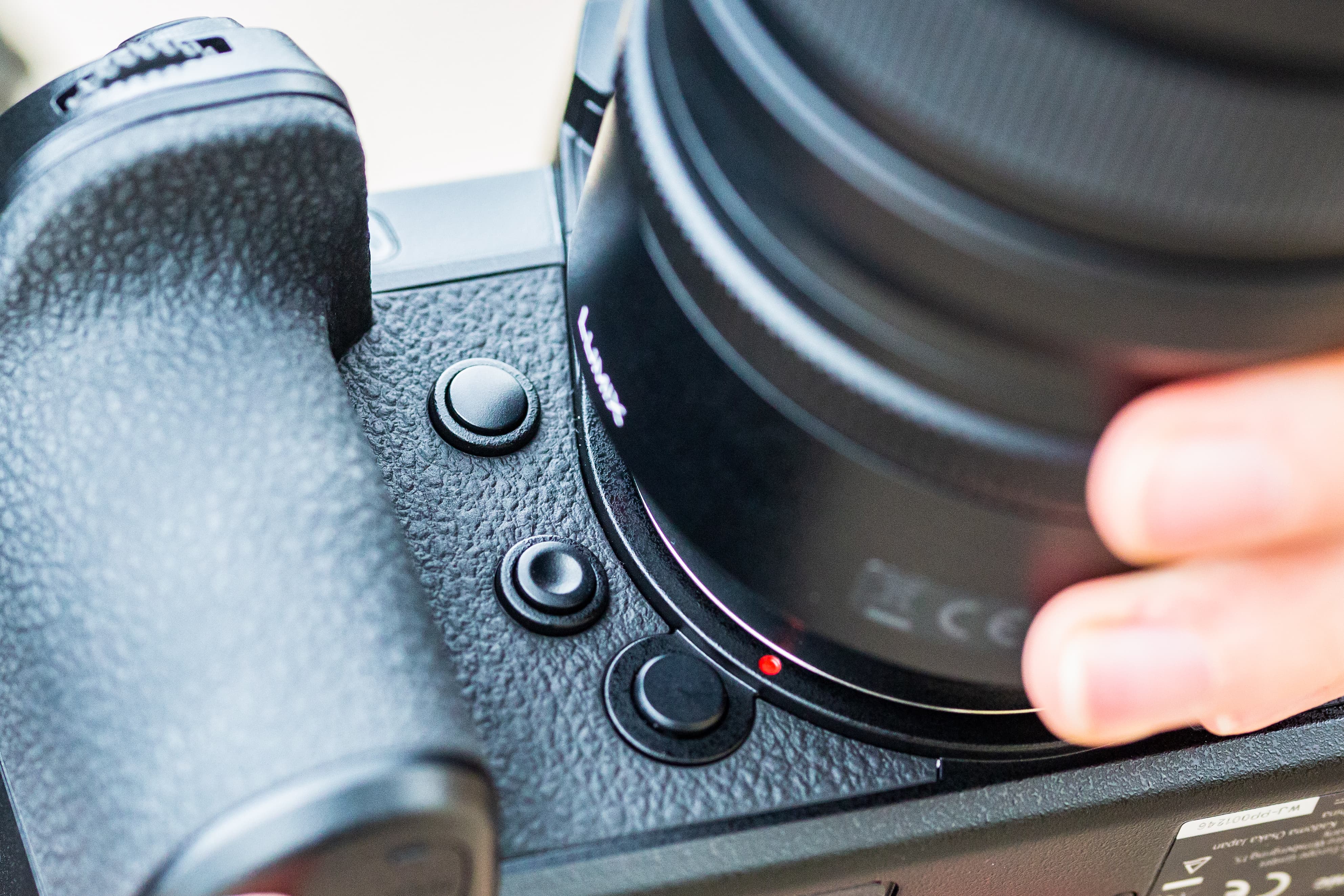
The lens release button is located below two function buttons. Note the red dot that helps with aligning lenses with the body
Studying the body from the front, you’ll notice two function buttons (Fn1 and Fn2) beside the lens mount. Head to the Fn button set option in the menu and you’ll find different functions can be set to a variety of buttons in both record and playback modes. Another handy feature is the Fn lever, at the front of the body. This can be used to quickly select different shooting functions and from the menu you’re given 19 options in total, including AF mode, photo style, image quality, self-timer, shutter type and focus peaking. The S1R’s level of customization is excellent, allowing users quick and easy access to setting it up exactly as they’d like to use it.
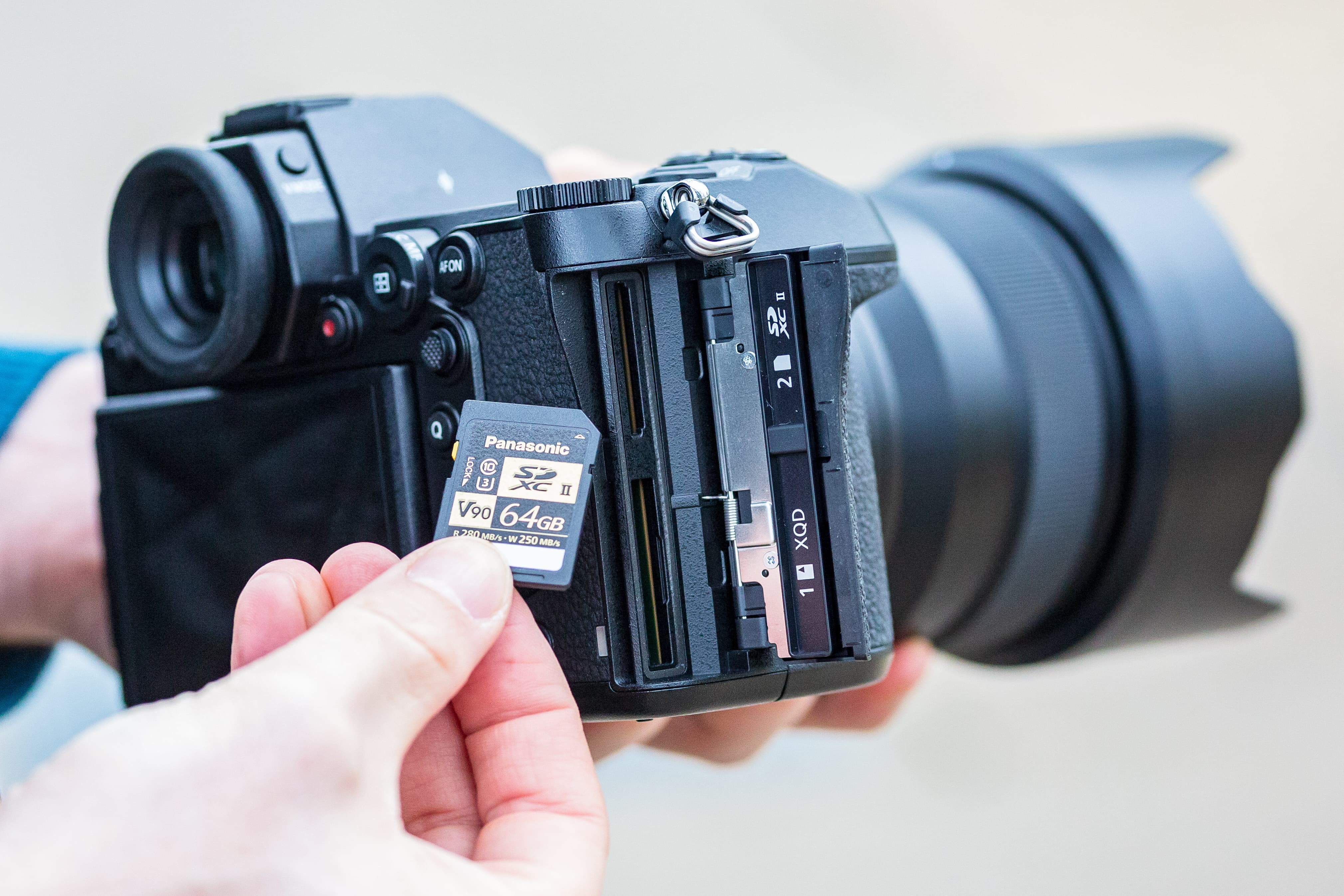
SD cards are loaded in the top slot, with XQD cards inserted below. The memory card door is well sealed to provide a good level of protection from dust, dirt and moisture
As for the S1R’s magnesium alloy die-cast front and rear panels, these give the body a good sense of strength and robustness. It has a high-end, premium feel to it that all serious and professional photographers look for and with weather seals at every joint, dial and button, it has the protective measures in place to let you keep shooting whatever the weather. It can even be used in temperatures as low as -10°C. The shutter meanwhile is very sweet sounding and is made to endure 400,000 actuations.
Panasonic Lumix S1R: Viewfinder & Screen
It’s quite a statement, but the S1R has the most impressive electronic viewfinder of any camera we’ve ever tested. Like the Lumix S1, it’s the first camera in the world to debut a 5.76-million-dot OLED EVF – a resolution that’s exceeds the 3.6-million-dot EVF units you get on Nikon’s Z-series cameras and even the 4.4-million-dot EVF on the Leica SL.
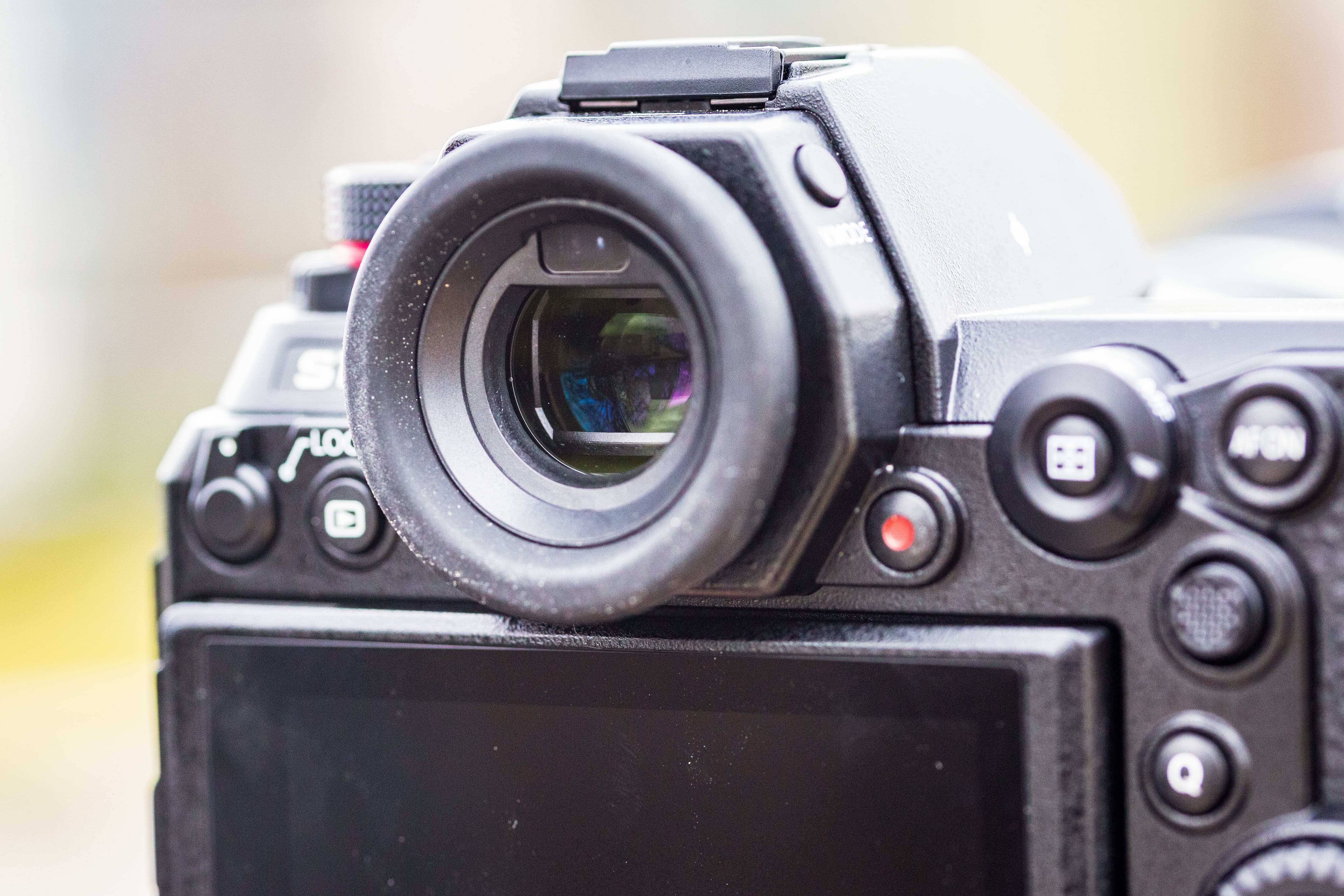
The eye sensor is positioned above the EVF. The V.MODE button on the right side of the EVF unit is used to switch between the different viewfinder magnifications (0.78x, 0.74x, 0.7x)
With a 10.000:1 contrast ratio, minimum lag time of 0.005secs and refresh rate of 60fps that can be increased to 120fps, it displays a sensationally sharp and accurate view to the point you’re left wondering if it’s possible for EVFs to get any better. The default magnification (0.78x) can be reduced to 0.74x and 0.7x using the V-Mode button for users of glasses who may struggle to view the corners of the frame and there’s no viewfinder blackout beyond the first frame, making it easier to track and follow fast and erratic subjects during a high speed continuous burst.
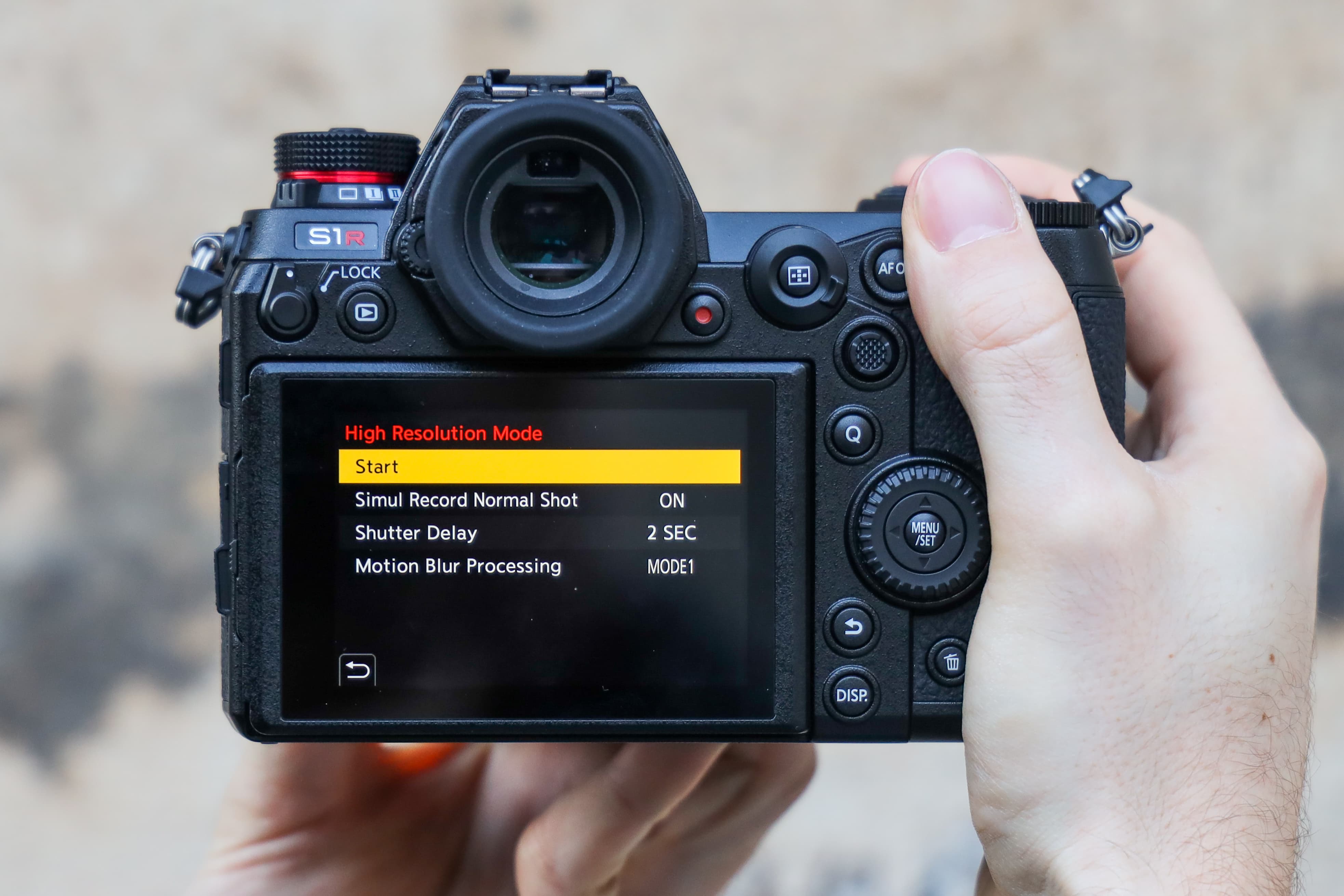
Onscreen settings can be navigated in a number of ways. You can use the joystick, the rear command dial/four way controller or tap the touchscreen with your finger
The 3.2in, 2.1-million-dot touch screen is a slim unit and doesn’t protrude too much at the rear. Being the triaxial tilting type, it’s designed to withstand rugged professional use and doesn’t block any of the ports at the side in any tilted position. It’s very similar to the type of three-way screens we’ve seen before on Fujifilm’s premium X-Series cameras and with a press of a button at the side it’s possible to pull it out and tilt it to aid with high and low angle shots in the portrait format.
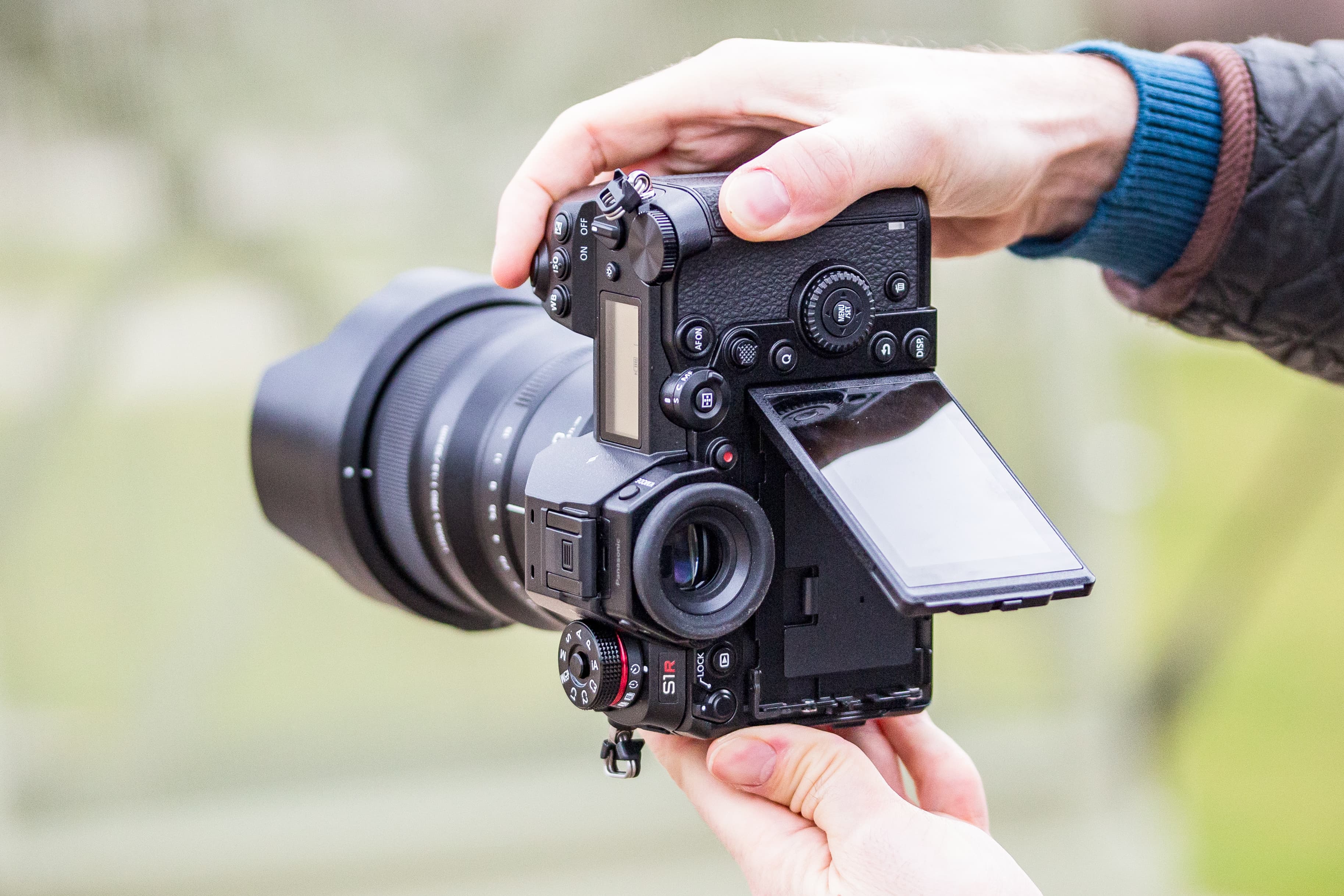
This image illustrates how the screen can be pulled out to aid shooting from low and high angles when shooting in the portrait format
The panel is sensitive to light touches, letting you navigate through the new two-tier menu system quickly and precisely. The same can be said for reviewing images in playback. A double tap of the screen takes you to 2x-magnified view, with the rear dial allowing you to zoom up to 16x magnification.
Panasonic Lumix S1R: Autofocus
Panasonic have once again put faith in their Contrast AF with DFD system, which during our testing demonstrated excellent accuracy, with no sign of hesitation when asked to focus in favourable lighting conditions on static subjects in AFS mode. But what about its performance in low light or when asked to track moving subjects?
Using the S1R in a gloomy bar where contrast was lacking was a much tougher test. Here, focus lock on wasn’t instantaneous and signs of hunting were observed. Though a majority of the time it would find focus, occasionally requiring a second attempt, it relies heavily on the help of its bright orange AF assist beam in this type of environment.
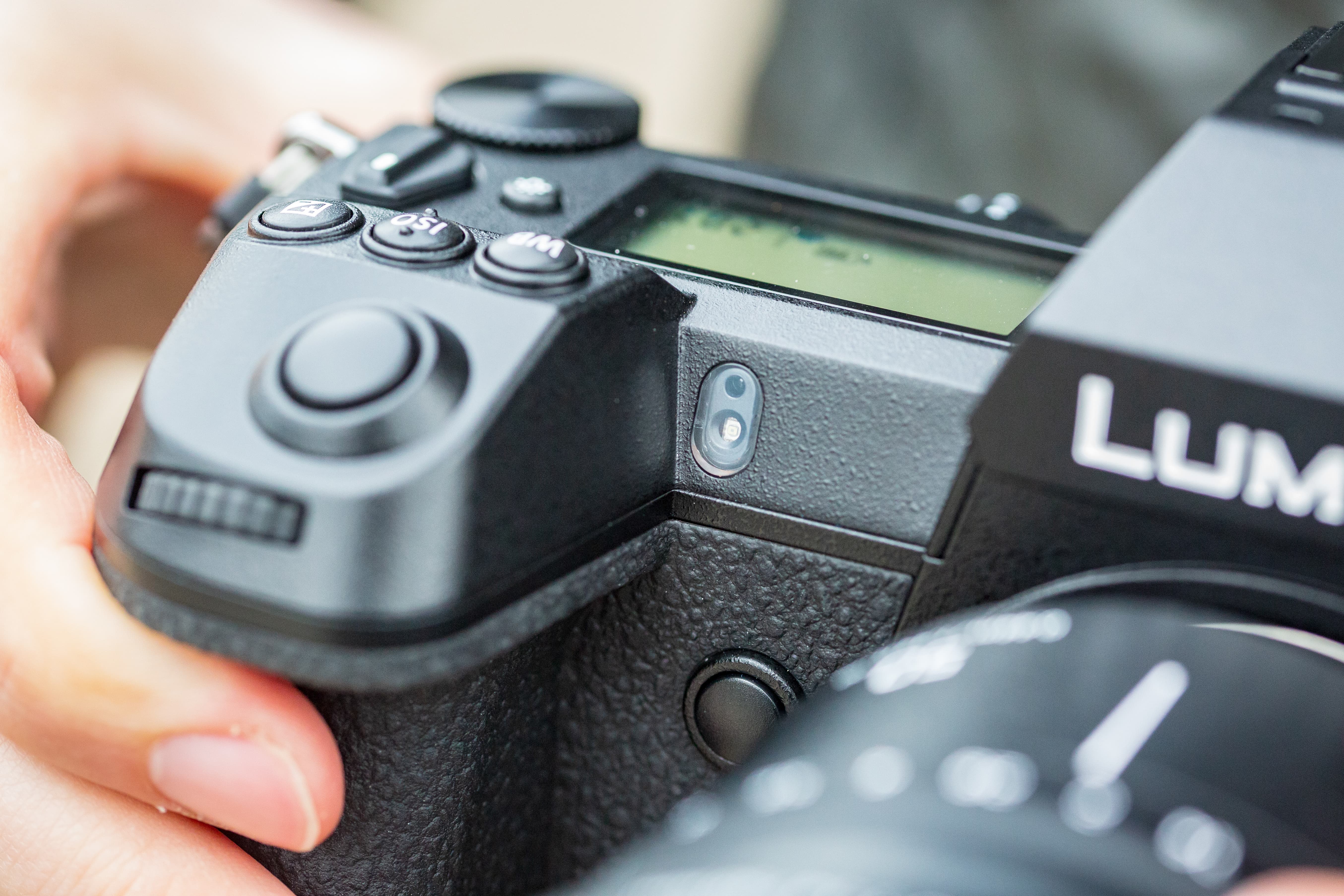
The camera relies on its AF assist beam to help with focusing in very poor lighting conditions
Switch the camera across to continuous AF (AFC) and you’ll also become aware of a certain pulsing as the AF system constantly attempts to focus. Despite capturing some pleasing high-speed action shots, a couple of opportunities were missed when it either failed to lock-on fast enough or struggled to keep up with the high speed subjects it was asked to track.
The AF mode is changed between single AF (AFS) and continuous (AFC) using the switch that surrounds the AF area button, but as previously mentioned this is somewhat plasticky and would have been better had it been machined from metal. Pinpoint AF is great for extremely precise focusing and face/eye/body/animal detection works well provided the person, people or animal you’re photographing aren’t too distant or appear too small in the frame.
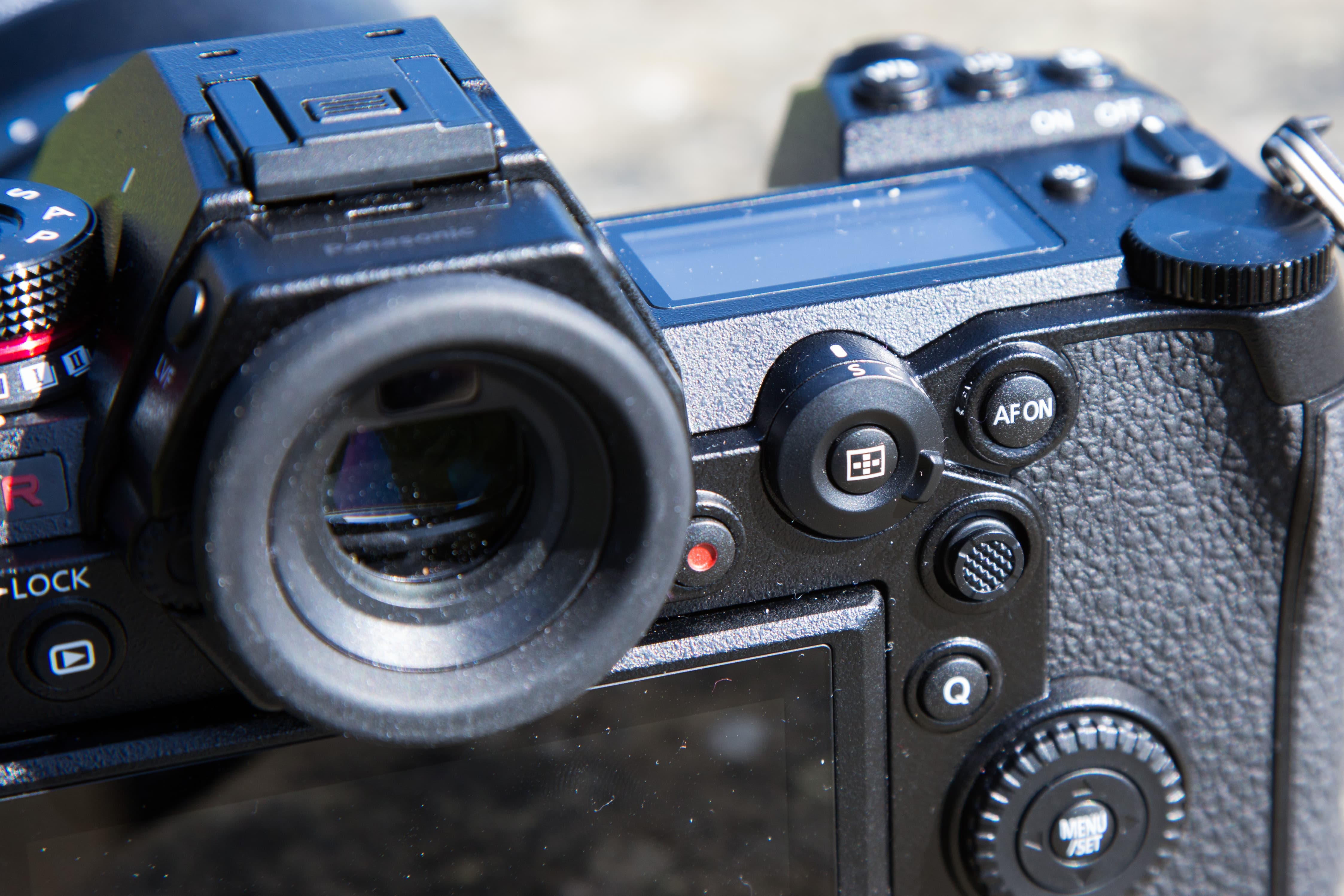
The AF mode switch/AF area button feels a touch plasticky. The joystick is better positioned than the joystick on the Panasonic Lumix G9
There are tracking and 225-area AF modes too, with the S1R’s 1-area AF mode letting users define the position of the AF point in up to eight sizes with the two zone modes being a good option for moving subjects in combination with AFC mode. You can choose from a vertical/horizontal arrangement of AF points or an oval setting, with the option to enlarge the coverage and change its position using the control dial and AF joystick. After receiving criticism about the position of the Lumix G9’s joystick, I’m glad to report the S1R’s joystick is better placed at the rear of the camera.
Panasonic Lumix S1R: Performance
As one would expect from a pro-spec body costing £3,399, the S1R puts in a very creditable performance. The Venus image processing engine showed that it’s up to the task of handling huge volumes of data from the powerful full-frame sensor and with high performance memory cards like the Sony 64GB G Series XQD card we used it with for our testing, there’s no hesitation between shots in single shot mode.

For this shot the new AWBw Auto White Balance mode was used, which retains a reddish tint to images and is available in addition to the AWB (standard) and AWBc (bluish tint) modes. Panasonic Lumix S1R, Lumix S Pro 50mm f/1.4, 1/250sec at f/4, ISO 100
Speed tests set to continuous shooting resulted in the S1R being able to record 35 Raw and Fine JPEG files at 9fps, increasing to 40 frames when shooting in Raw and 55 frames when set to Fine JPEG. Switching the focus mode to continuous (AFC) sees the burst rate drop to 6fps – slower than the 10fps with continuous AF offered by the Sony A7R III. At this speed, 42 Raw and Fine JPEG files were recorded before the buffer required a breather.
The burst shot settings are easy enough to locate from the menu, however the descriptions fail to tell you how many frames per second the camera shoots at in each mode. Adding this or combining it within the continuous high-speed shooting icon onscreen would be useful for referral.

A shot taken whilst testing the S1R’s monochrome picture style and high ISO performance. The image was originally much darker, but the large dynamic range allowed me to return a good amount of detail to the shadowed areas during raw processing. Panasonic Lumix S1R, Lumix S Pro 50mm f/1.4, 1/1250sec at f/1.8, ISO 3200
The camera fires into life very quickly from a flick of the on/off switch, which is great for instantaneous moments that may present themselves. I did however find the delay between reviewing an image on the rear screen in playback mode and then entering shooting mode a little irritating and felt that this transition could be made faster, which would further rule out the chance of any spur of the moment opportunities being missed.
The icon in the top right hand corner of the screen and EVF, which displays the function of the image stabiliser is very useful to glance at and changes automatically based on the lens you’re using. The effectiveness of the image stabiliser is such that I managed to capture a few sharp handheld frames at 1/15sec at a 200mm focal length. It can be setup to be always active or activated on a half press of the shutter, with the latter being the better option if you’d like to preserve battery life.

An example of how effective the Dual I.S system is for handheld shooting at low shutter speeds. The combination of body and lens image stabilisation allowed me to capture this sharp handheld image at 1/15sec at 200mm. Panasonic Lumix S1R, Lumix S Pro 70-200mm f/4 O.I.S, 1/15sec at f/6.3, ISO 400
Occasionally we see something introduced onto a camera that’s so good and so useful, it makes you wonder why we’ve never seen it before. The way the ISO button can be tapped continuously to incrementally increase ISO without having to use a dial is a brilliant idea. When you get to the maximum ISO setting one more tap of the ISO button takes you to Auto ISO, with a second tap taking you to the lowest ISO setting.
Tapping the White Balance button works similarly and takes you through the various white balance settings very quickly. Trying out the new AWBw Auto White Balance mode showed that it too works effectively, reproducing a slightly more rosy skin colour to portrait shots than the standard AWB and AWBc (cool tint) modes.

Animal detection can be turned on and off easily from the AF mode options. Here it was put to good use and identified the dog in the frame quickly, resulting in a pin-sharp focus exactly where I wanted it. Panasonic Lumix S1R, Lumix S Pro 70-200mm f/4 O.I.S, 1/400sec at f/4, ISO 400
A couple of other shortcuts I found during use included the AF ON button doubling up to rate/protect images in playback mode, holding the Q button in shooting mode takes you straight to the video settings and holding the AF area button in playback lets you swap to viewing images on the second card if one is loaded. I also noticed the shutter button isn’t quite as sensitive as the one on the Lumix G9, which required the lightest of presses beyond a halfway press to take a shot.

Several tests of the High Resolution mode revealed that Mode 2 is highly effective at determining moving areas with a scene. The wind was blowing a gale at the time this shot was taken, but all the branches on the tree appeared sharp. Image taken at Bateman’s House, in East Sussex. Panasonic Lumix S1R, Lumix S Pro 50mm f/1.4, 1/640sec at f/5.6, ISO 100. Taken in High Resolution Mode 2
The S1R’s high-resolution mode is very user friendly, being both quick and easy to setup and use. To minimise risk of blur caused by knocking the camera during the start of an exposure there’s the option to delay the recording process from nine settings (1/8sec to 30secs). You also get the option to simultaneously record a normal image in the raw or JPEG format. I did find one small glitch however whereby the preview of the normal raw image directly after the high-resolution image was poorly rendered on the screen at high magnification in playback. Hopefully this will be addressed with a future firmware update.

A closeup of the High Resolution image above showing how well Mode 2 renders moving subjects in a scene, such as trees and branches blowing in high winds. Panasonic Lumix S1R, Lumix S Pro 50mm f/1.4, 1/640sec at f/5.6, ISO 100. Taken in High Resolution Mode 2
With a fast shutter speed, the S1R takes eight consecutive shots in quick succession before merging this data to create one huge 187-million-pixel high-resolution image – a process that against the clock takes 18 seconds from start to finish. It’s important to note though that it’s not possible to change settings or recompose using the screen or EVF until the process is fully completed so an element of patience is required.

A 100% magnified view showing the incredible amount of detail that’s resolved using the S1R’s 187MP High Resolution mode. This crop of the chimneys was taken from the image of Bateman’s House above. Panasonic Lumix S1R, Lumix S Pro 50mm f/1.4, 1/640sec at f/5.6, ISO 100. Taken in High Resolution Mode 2
Interested to find out how High Resolution mode fares in situations where moving subjects are included in a scene, I switched it over to Mode 2 and attempted some high-resolution images on a blustery day where trees and greenery were blowing in the wind. The internal image rendering applied by the camera in this mode proved to be very effective in this situation, managing to keep branches and shrubbery sharp with no obvious traces of motion blur on close inspection. How it manages to do this is witchcraft. We intend to follow up with a more in-depth article all about the S1R’s high-resolution mode, how it works and the results you can expect from using it in due course.
Panasonic Lumix S1R: Image quality
To maximise the fine level of detail the Lumix S1R’s sensor is able to record it goes without an anti-aliasing filter and employs aspherical micro lenses over each pixel to enhance its light-gathering ability. The level of fine detail the sensor resolves when it’s used with incredibly sharp lenses such as the Lumix S Pro 50mm f/1.4 is quite astonishing when you start to zoom in and inspect images closely. Editing many raw files after converting them using Adobe DNG converter revealed that the sensor has a wide dynamic range, offering good leverage when it comes to returning detail to the deepest shadows in a scene. Noise is also very well controlled right up to ISO 12,800, preserving excellent detail in high ISO images.
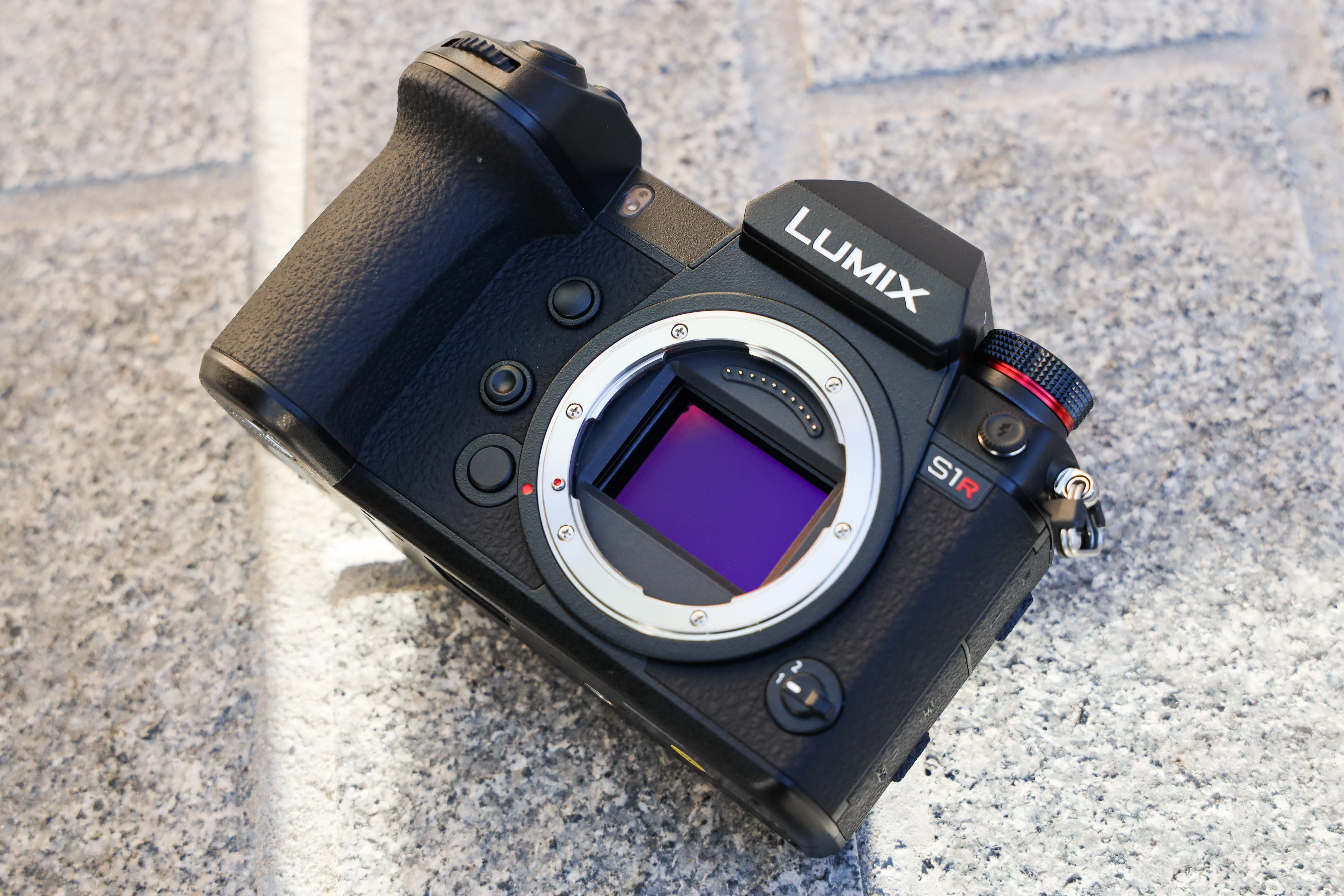
Panasonic Lumix S1R: Resolution
With Adobe Camera Raw and Lightroom yet to support the S1R’s .RW2 raw files at the time of testing, Adobe DNG converter was used to convert the files first. A detailed look at the S1R’s raw files tells us its 47.3MP sensor achieves approximately 5000 lines per picture height at ISO 50, which is a spectacular result for a full-frame chip and is on par with the figure previously recorded by the Nikon Z 7 at its base ISO 64 setting. This figure drops as the ISO is raised, but detail still remains extremely high. At ISO 3200 and ISO 6400 it resolves an extremely high 4400 l/ph, with 4200 l/ph being resolved at ISO 12800. At the top standard setting of ISO 25,600, the S1R registers in excess of 3600l/ph.
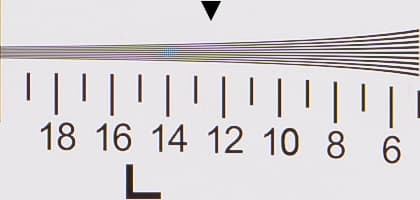
Panasonic Lumix S1R Resolution ISO 50
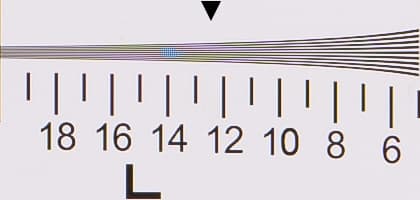
Panasonic Lumix S1R Resolution ISO 100
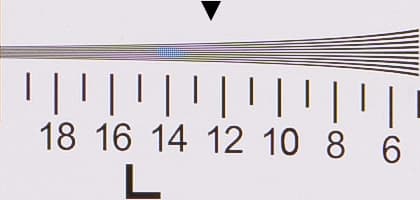
Panasonic Lumix S1R Resolution ISO 400
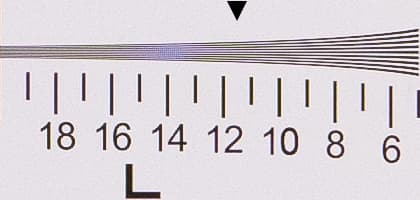
Panasonic Lumix S1R Resolution ISO 1600
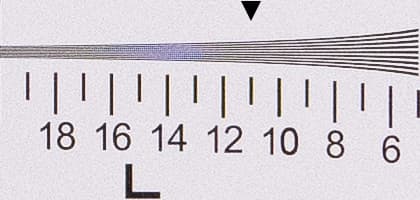
Panasonic Lumix S1R Resolution ISO 6400
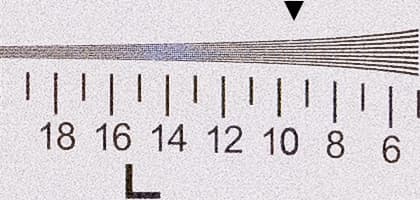
Panasonic Lumix S1R Resolution ISO 25600
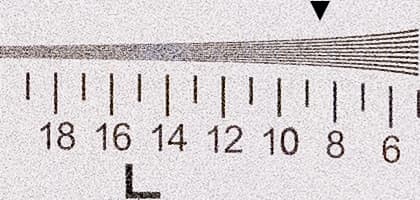
Panasonic Lumix S1R Resolution ISO 51200
Panasonic Lumix S1R: ISO and noise
Inspecting the S1R’s raw files after converting them to .DNG files shows that sensor generates wonderfully clean and detailed images with rich, faithful colour between ISO 100 and ISO 800. When you reach ISO 1600, luminance noise is traced, but is only obvious when images are inspected very closely at 100%. Shots taken at ISO 3200 and ISO 6400 are entirely useable, though I did find myself applying a touch of noise reduction to counteract the increased, but still relatively minor amount of luminance noise. Even the highest standard setting of ISO 25,600 could be used as a last resort with some extra noise reduction applied, but I’d keep ISO 6400 or ISO 12,800 as my upper limit when working in Auto ISO. The extended ISO 51,200 setting should be avoided and I noticed a green tinge starts to appear in the darkest shadowed regions.

The crops shown below are taken from the area outlined above in red. Test images were all taken with the Lumix S Pro 50mm f/1.4 lens
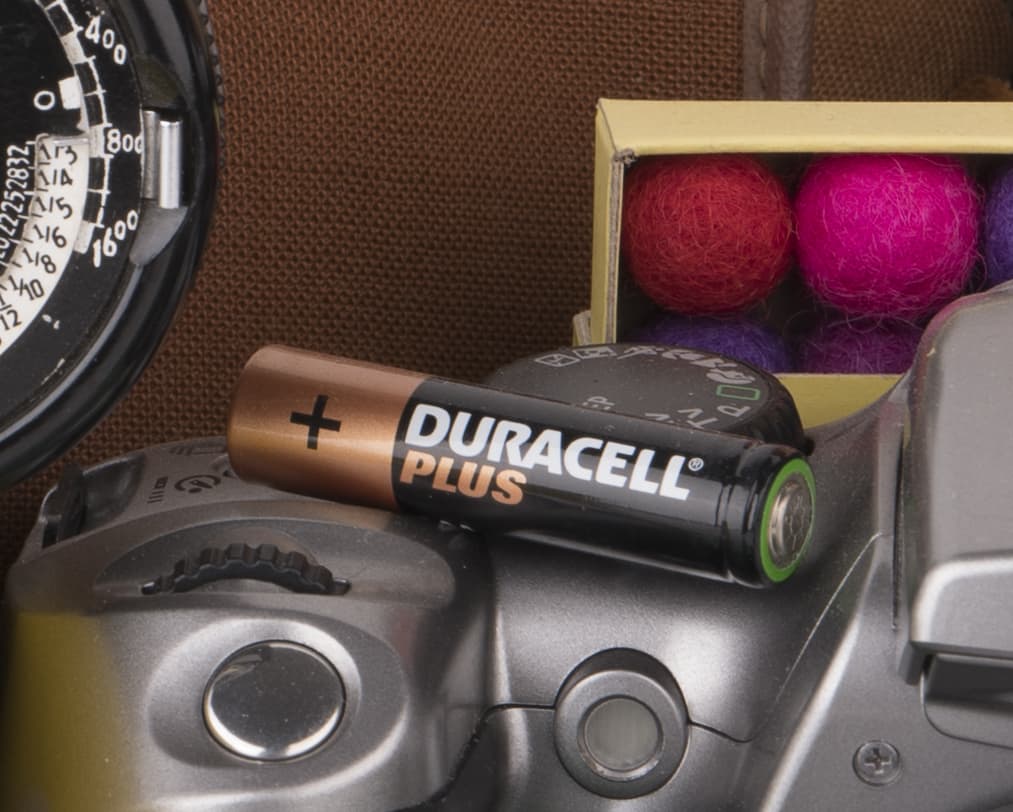
Panasonic Lumix S1R, Raw, ISO 50
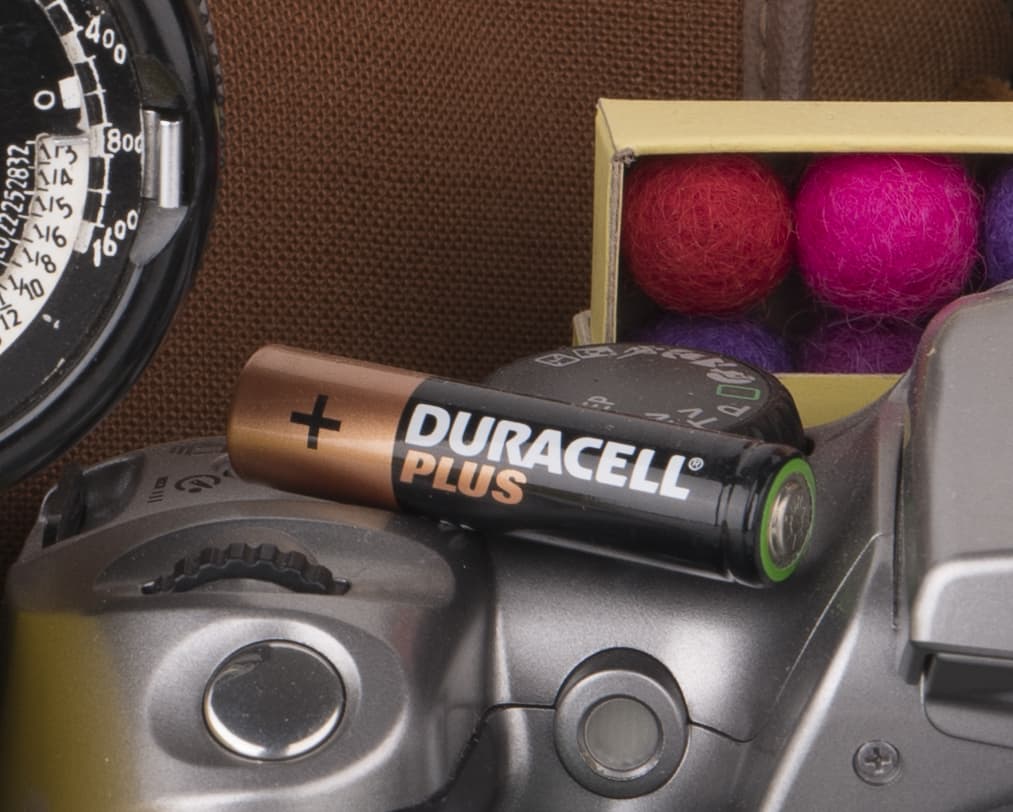
Panasonic Lumix S1R, Raw, ISO 100
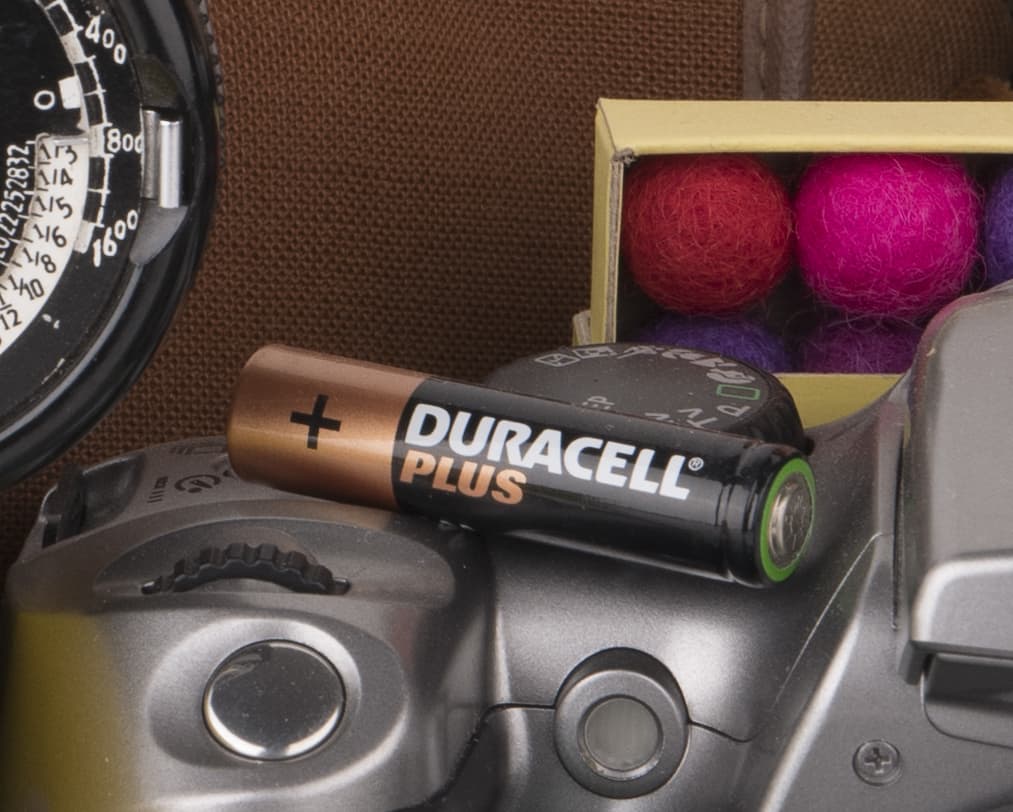
Panasonic Lumix S1R, Raw, ISO 200
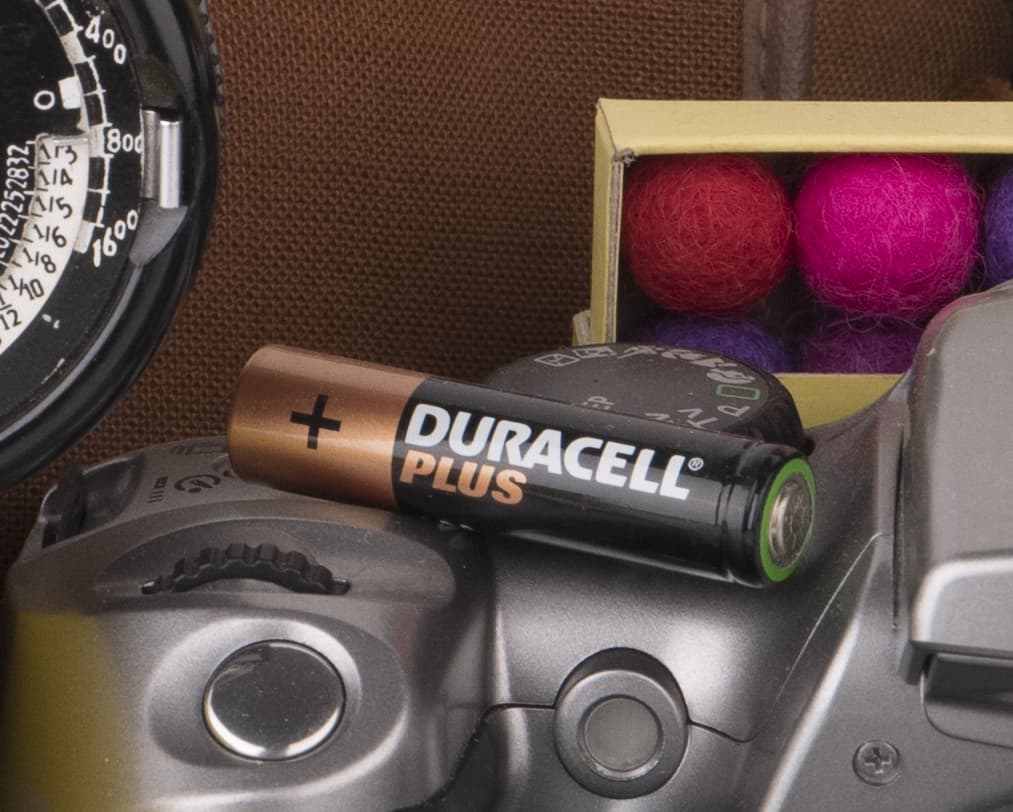
Panasonic Lumix S1R, Raw, ISO 400
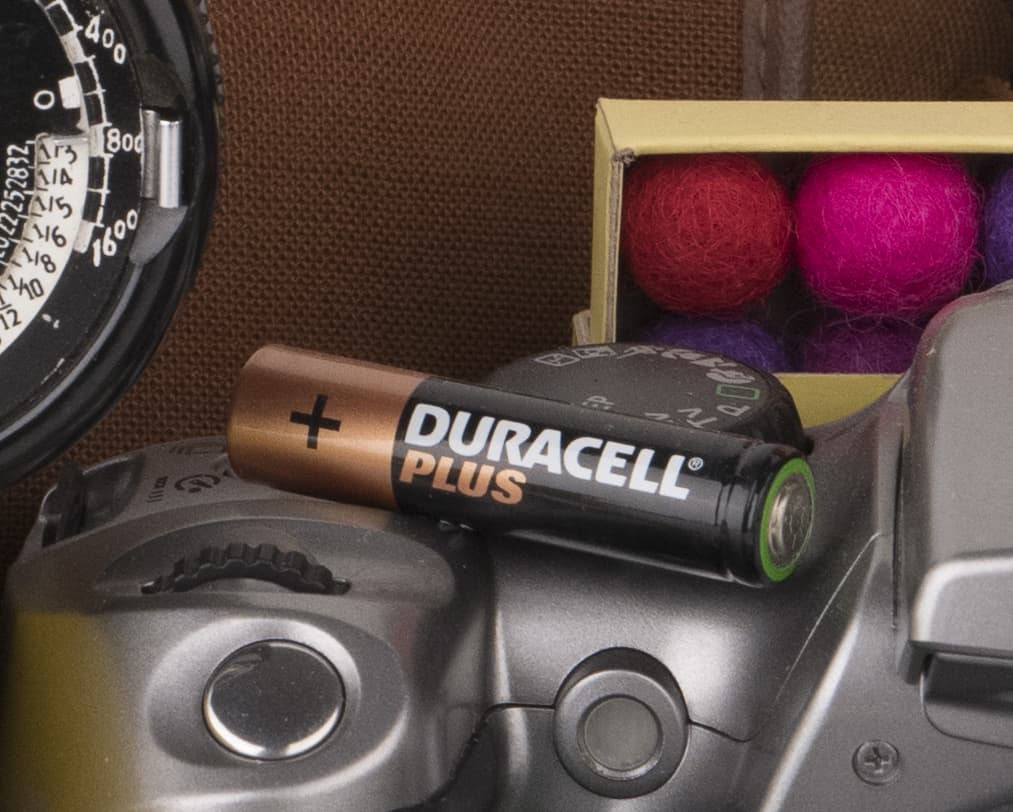
Panasonic Lumix S1R, Raw, ISO 800
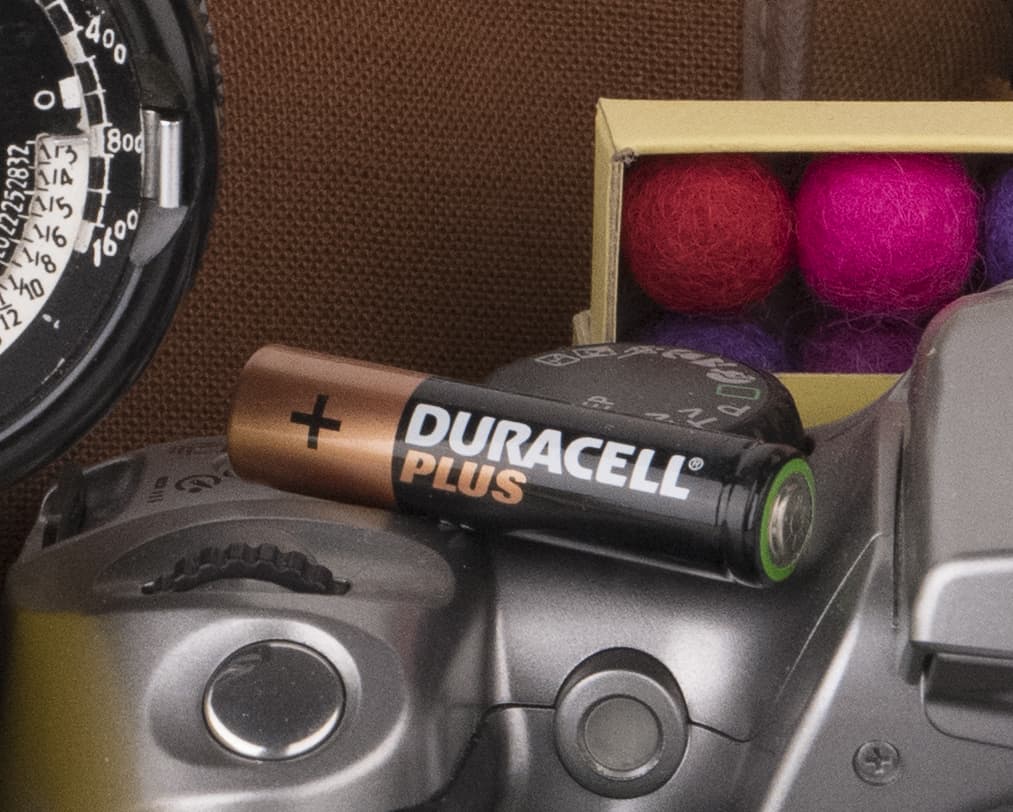
Panasonic Lumix S1R, Raw, ISO 1600
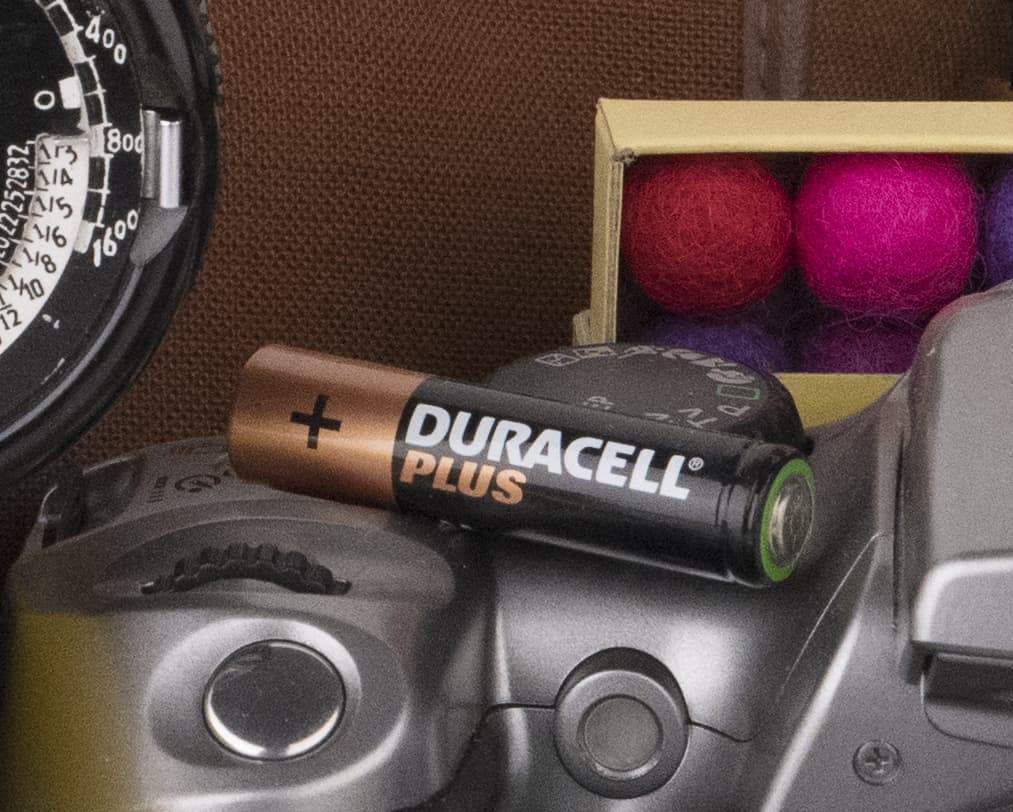
Panasonic Lumix S1R, Raw, ISO 3200
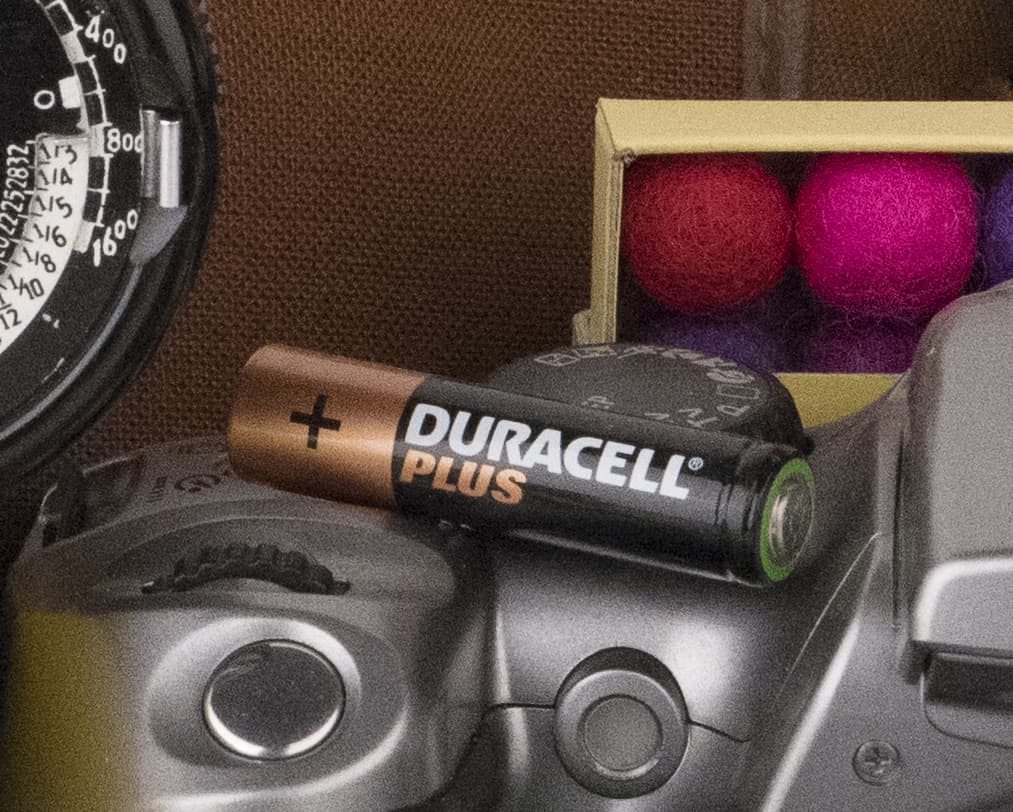
Panasonic Lumix S1R, Raw, ISO 6400
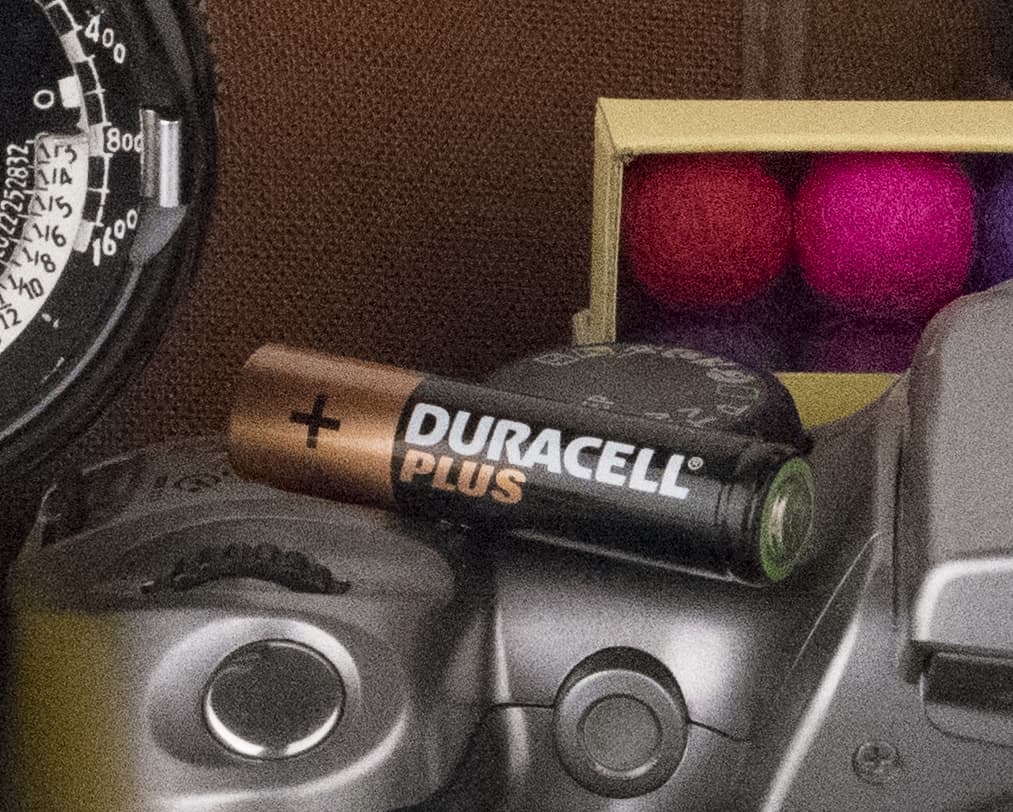
Panasonic Lumix S1R, Raw, ISO 12800
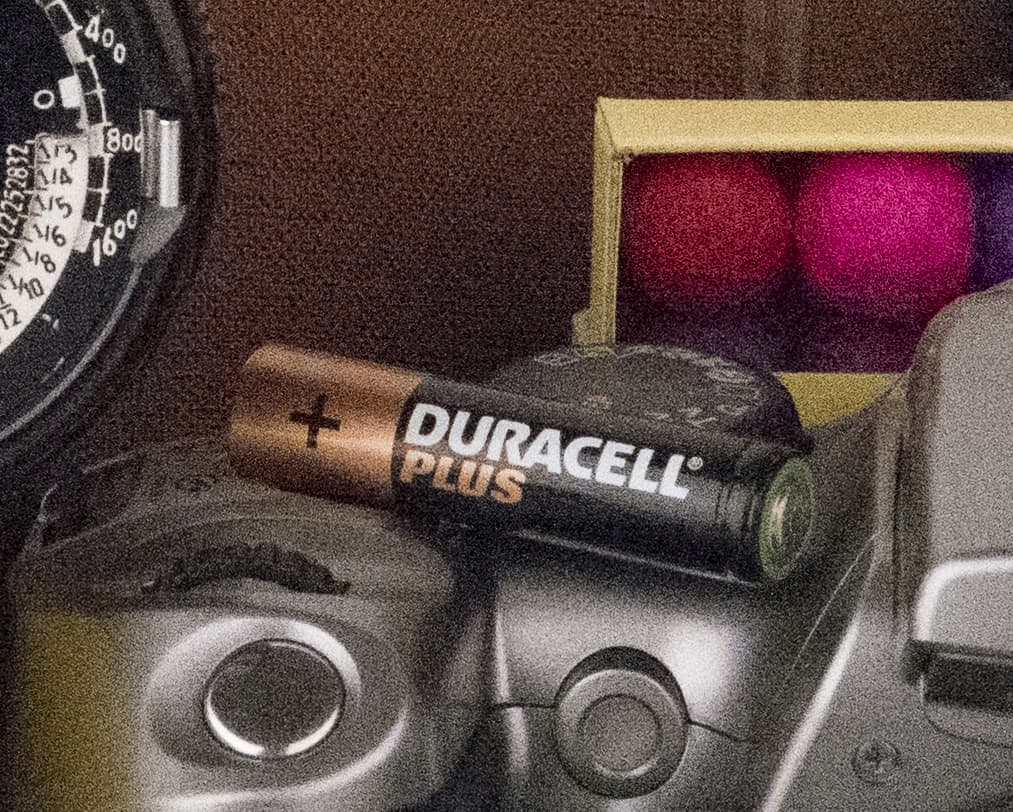
Panasonic Lumix S1R, Raw, ISO 25600
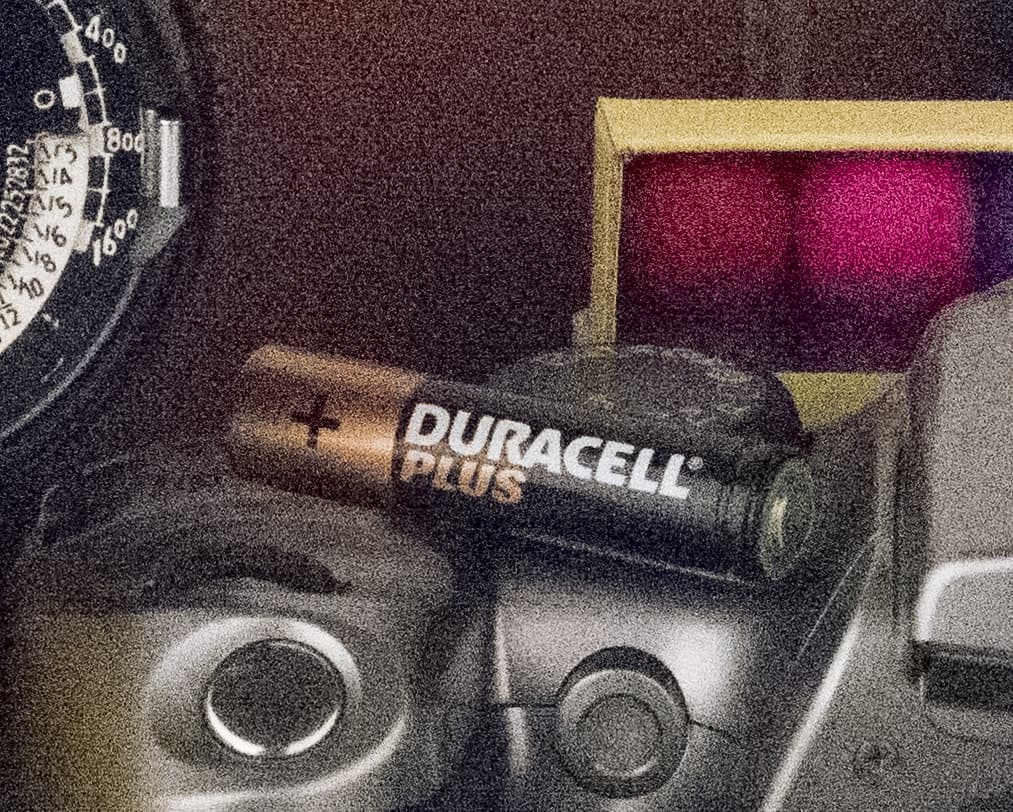
Panasonic Lumix S1R, Raw, ISO 51200
Panasonic Lumix S1R: Verdict
With the launch of the Lumix S1R, it’s clear that Panasonic is taking its entry into the full-frame mirrorless market very seriously. Rather than testing the water and taking the cautious approach of launching a full frame model aimed at amateurs and enthusiasts, the manufacturer has thrown absolutely everything into making the very best full frame camera they can for serious and professional photographers who are known for being one of the hardest audiences to please.

Panasonic has made the DMW-BGS1E battery grip (£299) for the S1R. It accommodates one extra DMW-BLJ31 battery, is built to the same weather-resistant standard as the body and offers a shutter release, control buttons and dials. Here it’s pictured attached to the Lumix S1R.
With stellar image quality from its 47.3MP full frame sensor and highly effective in-body image stabilisation, it falls into the same camp as the Nikon Z 7 and Sony A7R III with the benefit of being able to create whopping 187-million-pixel images using its extremely effective high-resolution mode. There’s so much more to like besides its image quality. It has the best EVF of any camera right now, offers resilient build quality, features an informative top plate display, provides twin card slots, a sensitive touchscreen and has a well thought through layout of buttons and dials if you exclude the rather poorly positioned on/off switch.
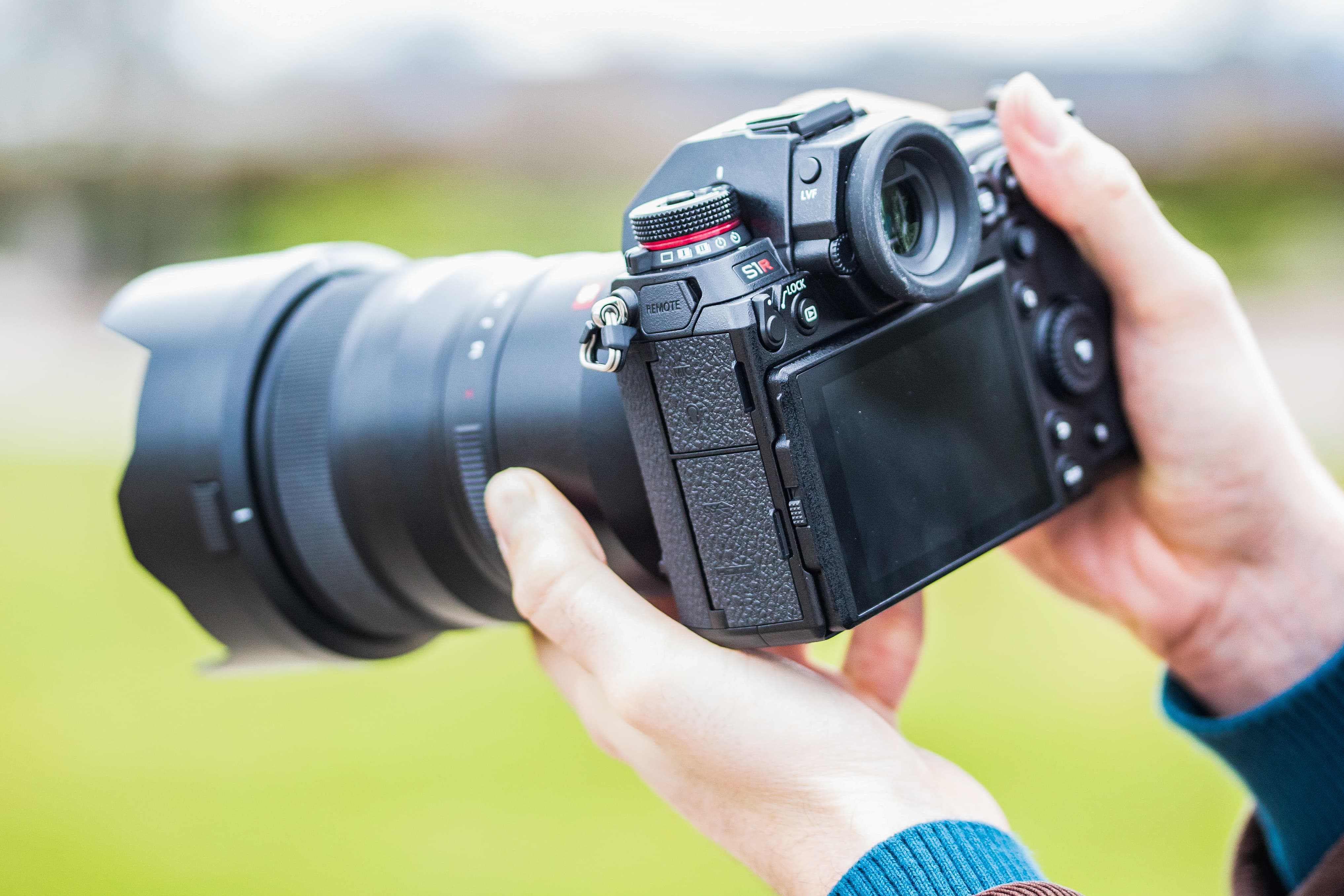
The red anodised ring at the base of the mode dial is synonymous with Panasonic’s premium cameras and has been adopted by the Lumix S1R
The S1R is neither small nor lightweight though. It’s actually quite the opposite and its big muscular body and heavy lenses offer no practical weight or size advantage over a full frame DSLR setup. Those who are fed up with lumping around a heavy system won’t find their answer in the Panasonic Lumix S1R. As good as it is to have a large grip and spacious layout of buttons, the weight of the camera with the heavy Lumix S Pro 50mm f/1.4 lens it was supplied with did take its toll and I looked forward to taking it off my shoulder at the end of a long days shooting.
One other area where the S1R is also at a disadvantage is its focusing ability in poor lighting conditions. It’s focus speed just didn’t seem to be a match for the phase-detect AF systems employed by many of its rivals.

The Panasonic Lumix S1R is the largest full frame mirrorless camera we’ve tested since the Leica SL (Typ 601) from 2015
For a first generation full frame model, the Panasonic’s Lumix S1R is a supremely impressive camera. It boasts a mouth-watering spec for serious and working pros whose main concern isn’t size or weight, but is about the feel, operation and quality of the images their camera delivers. It doesn’t get quite the same rapturous applause that the Sony A7R III or Nikon Z 7 received, but don’t let that take anything away from what Panasonic has managed to achieve. If you’re not already heavily invested in a full frame system and demand top notch image quality from a well made camera, the S1R is certainly worth exploring and shouldn’t be written off just because of its size and weight. To sum up, the Panasonic Lumix S1R is very good indeed, however it’s not quite perfect.

Panasonic Lumix S1R & S1: First Look
- Panasonic Lumix S1 £2,199.99 (body only), Panasonic Lumix S1R £3,399.99 (body only)
- Wide diameter L-mount
- Venus Imaging engine
- Dual Image Stabilisation system
- 4K 60p/50p video recording
- Dual card slot (XQD& SD)
- Weatherproof construction
One of the headline news stories to break last year was Leica, Panasonic and Sigma’s decision to come together and form the ‘L-Mount’ Alliance’ for the production of full-frame mirrorless cameras and lenses. Panasonic wasted no time in letting their intentions known. Shortly after the L-mount alliance press conference, the manufacturer announced that they were working on developing two new full-frame mirrorless ‘Lumix S-series’ cameras – the 24.2MP Lumix S1 and the 47.3MP Lumix S1R.
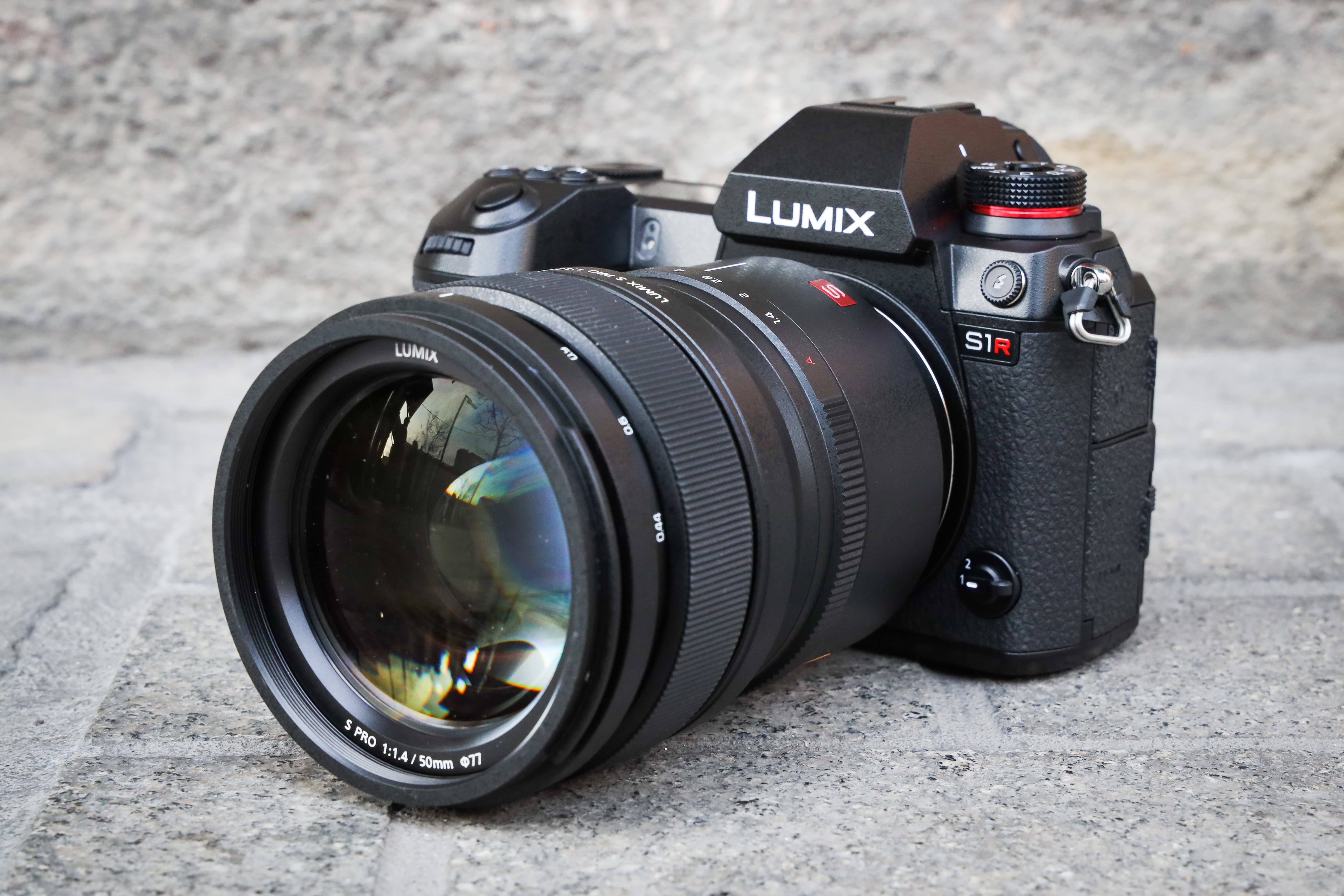
The Panasonic Lumix S1R (£3,399) with Lumix S Pro 50mm f/1.4 lens (£2,299)
As we’ve seen from other manufacturers, these twin models share the same body design but have different sensors to cater for two different audiences. The higher resolution Panasonic Lumix S1R is being targeted primarily at stills photographers who desire ultimate image quality, while the lower resolution Lumix S1 is more likely appeal to video shooters and stills photographers who don’t require the Lumix S1R’s 47.3-million pixels for day-to-day shooting.

The Lumix S1 and Lumix S1R feature a sizeable handgrip and a 5.76-million-dot OLED EVF
Rather like the Nikon Z 6 and Nikon Z 7, there are many similarities between the Panasonic Lumix S1 and S1R. Shared features include a new Venus imaging engine, a three-axis tilting touchscreen, a large top plate status panel and a Dual IS system that combines in-body image stabilisation with in-lens optical image stabilisation. Both models support 4K 60p/50p video recording, and after all the talk of recent full-frame mirrorless cameras only having one card slot, it’s refreshing that both have an XQD slot alongside an SD slot.
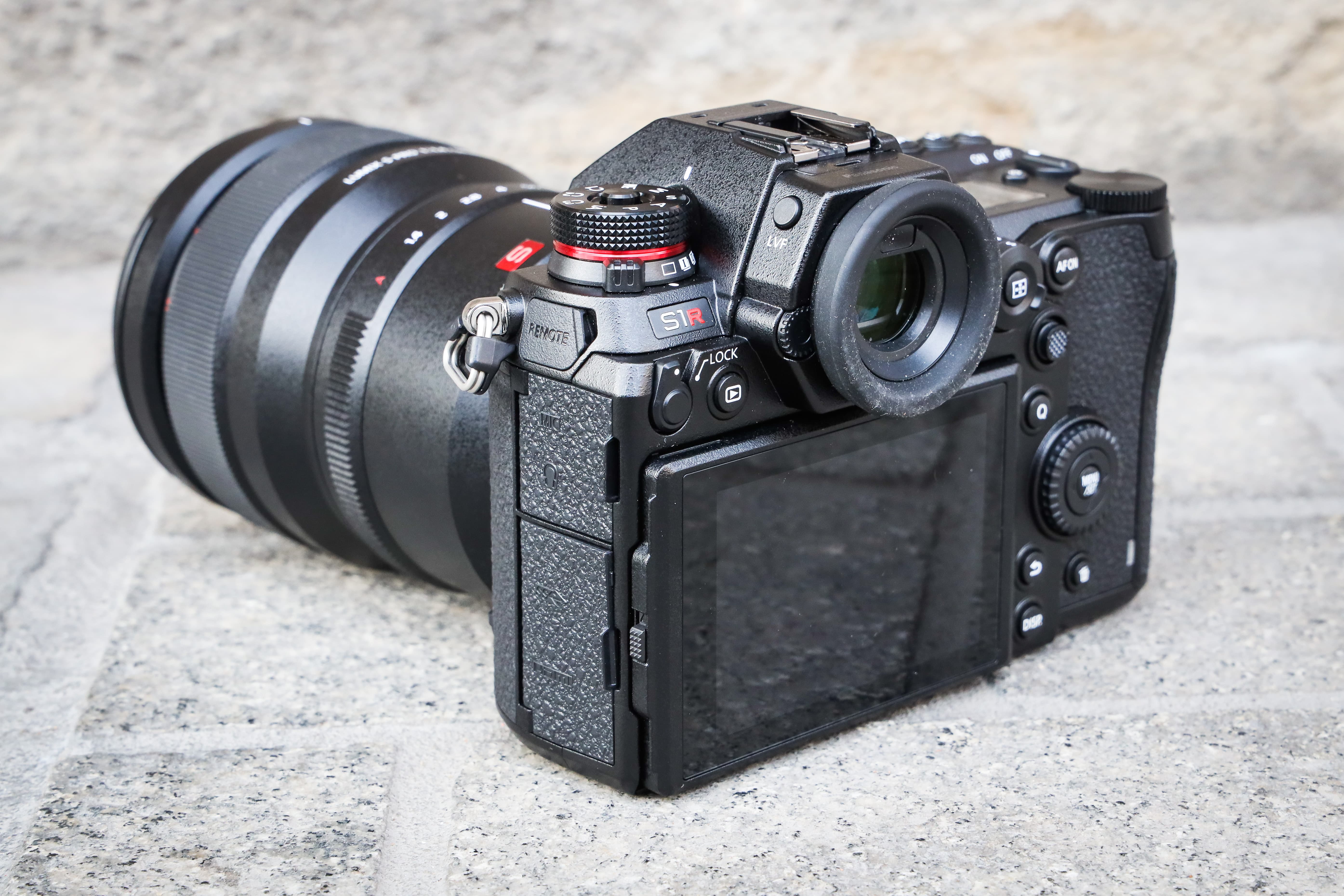
The red ring around the mode dial is a subtle reference to the Lumix S1/S1R’s premium status
Despite getting hands-on with a detailed mock-up sample of the Panasonic Lumix S1R last year, we’ve been patiently waiting for Panasonic to release more detailed information about both models and allow us to try a working sample. During our annual visit to Panasonic’s Digital Imaging Seminar, we were given the opportunity to extensively use both models and take a closer look at the three matched lenses that are initially being developed for the system: a 50mm f/1.4, 24-105mm f/4 standard zoom and 70-200mm f/4 telephoto zoom.
As we’ve reported previously, ten Panasonic L-mount lenses are expected to be available for the S-series by the end of 2020. Meanwhile, Leica has made it known that they’ll have 18 L-mount lenses available by the end of 2020 and Sigma has disclosed that 14 L-mount lenses will be available in 2019, including a mount converter.
Features
The main difference between the S1 and S1R lies directly behind the large diameter L-Mount, with the Lumix S1R boasting a 47.3-million-pixel sensor and the Lumix S1 offering a 24.2-million-pixel sensor. To maximise the fine level of detail the sensor is able to record the S1R’s chip does without an optical low-pass filter and implements new aspherical micro lenses over each pixel to improve the light-gathering ability at high ISO settings.
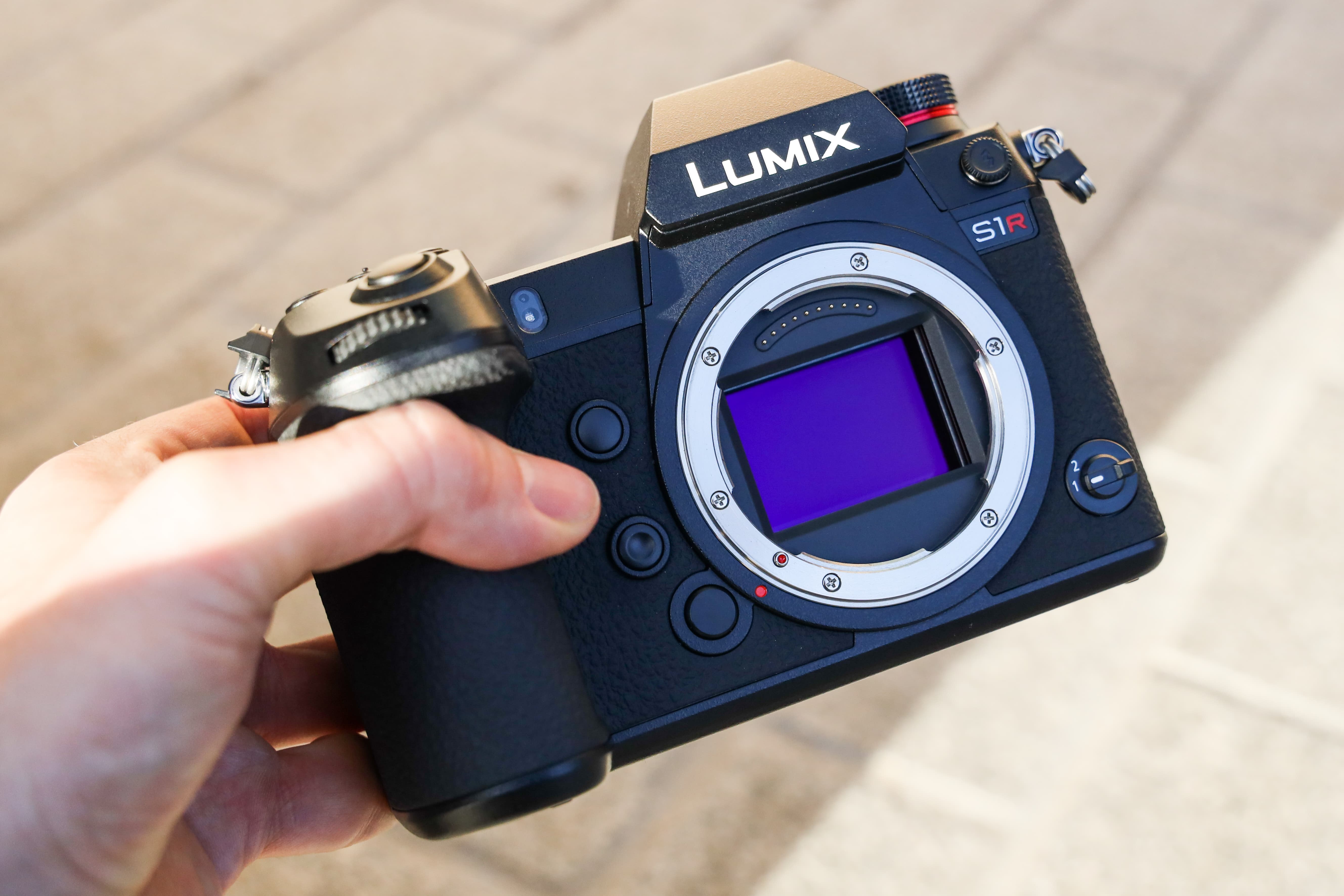
The Lumix S1R’s 47.3MP full frame sensor on full show during our recent hands-on experience
On the subject of sensor sensitivity, the ISO range on the Lumix S1R spans from ISO 100-25,600 (expandable to ISO 50-51,200), with the Lumix S1’s standard ISO reaching a maximum of ISO 51,200 (expandable to ISO 50-204,800). The sensors on both models partner up with Panasonic’s new Venus Engine processor, permitting continuous shooting speeds of up to 9fps in AFS or 6fps with continuous focus on both models.
Those who expected the Lumix S1 to offer a faster continuous burst than the Lumix S1R may be a little surprised to read that the two models are identical in this respect. If 9fps sounds a bit pedestrian, there’s also the opportunity to shoot bursts of 18-million-pixel JPEG images at 30fps in the S1/S1R’s 6K Photo mode, while 4K Photo offers sequences at 30fps or 60fps, albeit at a lower 8-million-pixel resolution.

Panasonic has introduced a second-level GUI – slightly different from the standard GUI we’re used to seeing on Panasonic Lumix G models such as the Lumix G9
When situations demand greater resolution than 47.3-million pixels, the Lumix S1R’s High Resolution Mode can be deployed to create a whopping 187-million-pixel image. Just like the high-resolution modes we’ve used before on other Panasonic cameras, such as the Lumix G9, this feature stitches together image information recorded in eight exposures that are taken as the in-body image stabilisation system makes subtle adjustments to the sensor position.
The High Resolution mode carries across to the Lumix S1 too and operates similarly in the way the sensor is shifted precisely between eight shots to create a single image with much finer detail. Take advantage of the S1’s High Resolution mode and you’ll be able to produce 96-million-pixel Raw files bursting with information. Although high resolution mode on both cameras is intended for tripod use, it can be used handheld. There are two modes to choose from too. Mode 1 is designed to prioritise high resolution in every part of the image whereas Mode 2 is intended for minimising blur such as greenery in landscape scenes.
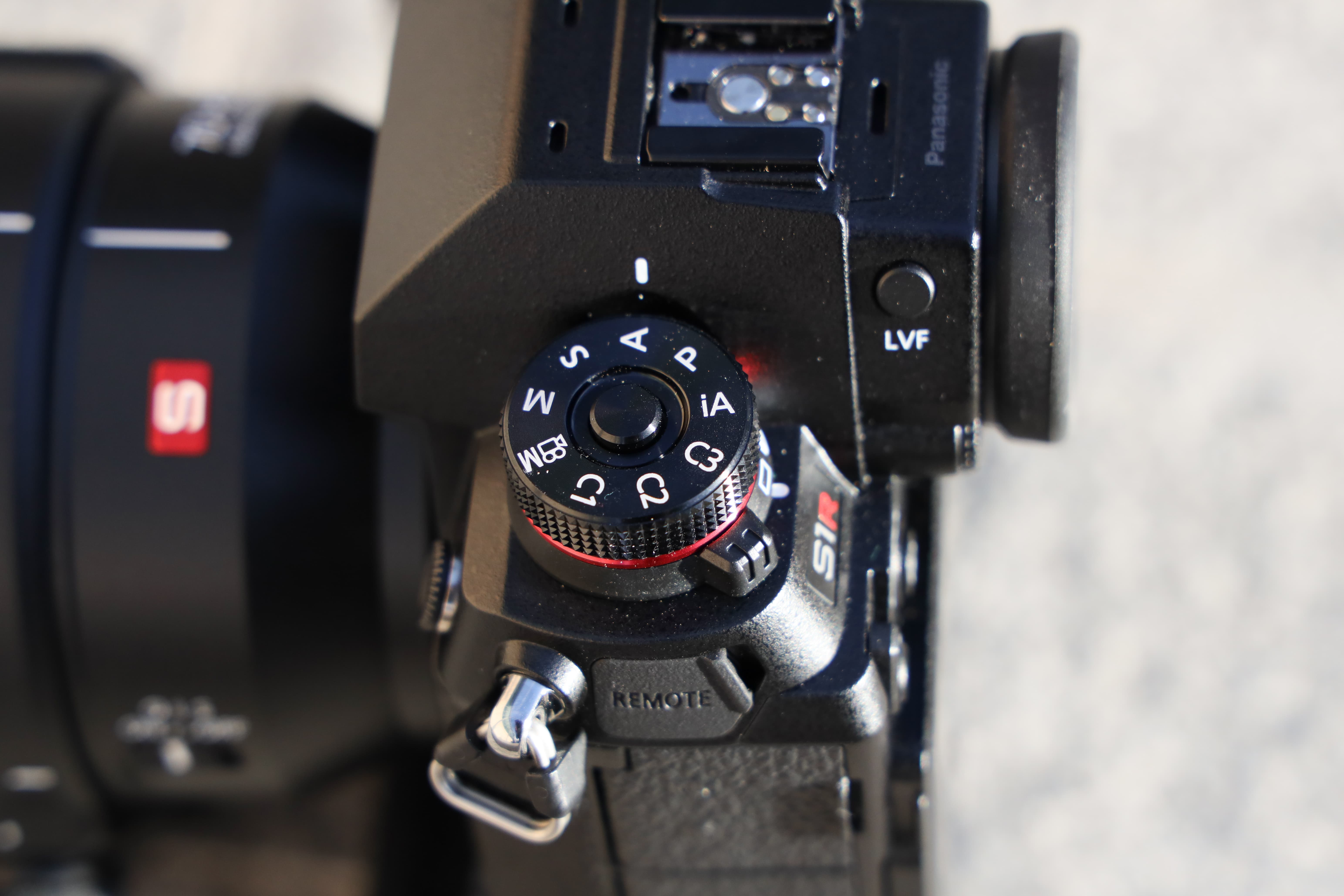
Note the LVF button. This is used to change the EVF/screen mode. Set it to Auto and the camera automatically switches between the EVF and screen as it’s raised and lowered from your eye
One of the key features on both models yet to be mentioned in detail is the 5-axis Dual I.S II image stabiliser, which offers 6.5 stops of compensation to counteract camera shake when shooting stills or movies. It works just like the system used in the company’s Lumix G9 in the way it combines 2-axis stabilisation from the lens with 5-axis stabilisation in the camera. Added to this, Panasonic has introduced what’s called an I.S. Status Scope to help photographers remove sources of camera shake by displaying a graphic interpretation of vibration.
Once again, Panasonic has relied on its formula of contrast detection and Depth From Defocus (DFD) technology for focusing. The S1 and S1R are both capable of acquiring focus within 0.08 seconds, with the Venus Engine, CMOS sensor and Lumix S lenses communicating at up to 480fps. While focus acquisition isn’t quite as fast as the 0.04sec claimed speed on the Lumix G9, the focus tracking has been improved with what’s called ‘advanced artificial intelligence technology’ to detect the differences between humans, cats, dogs and birds.
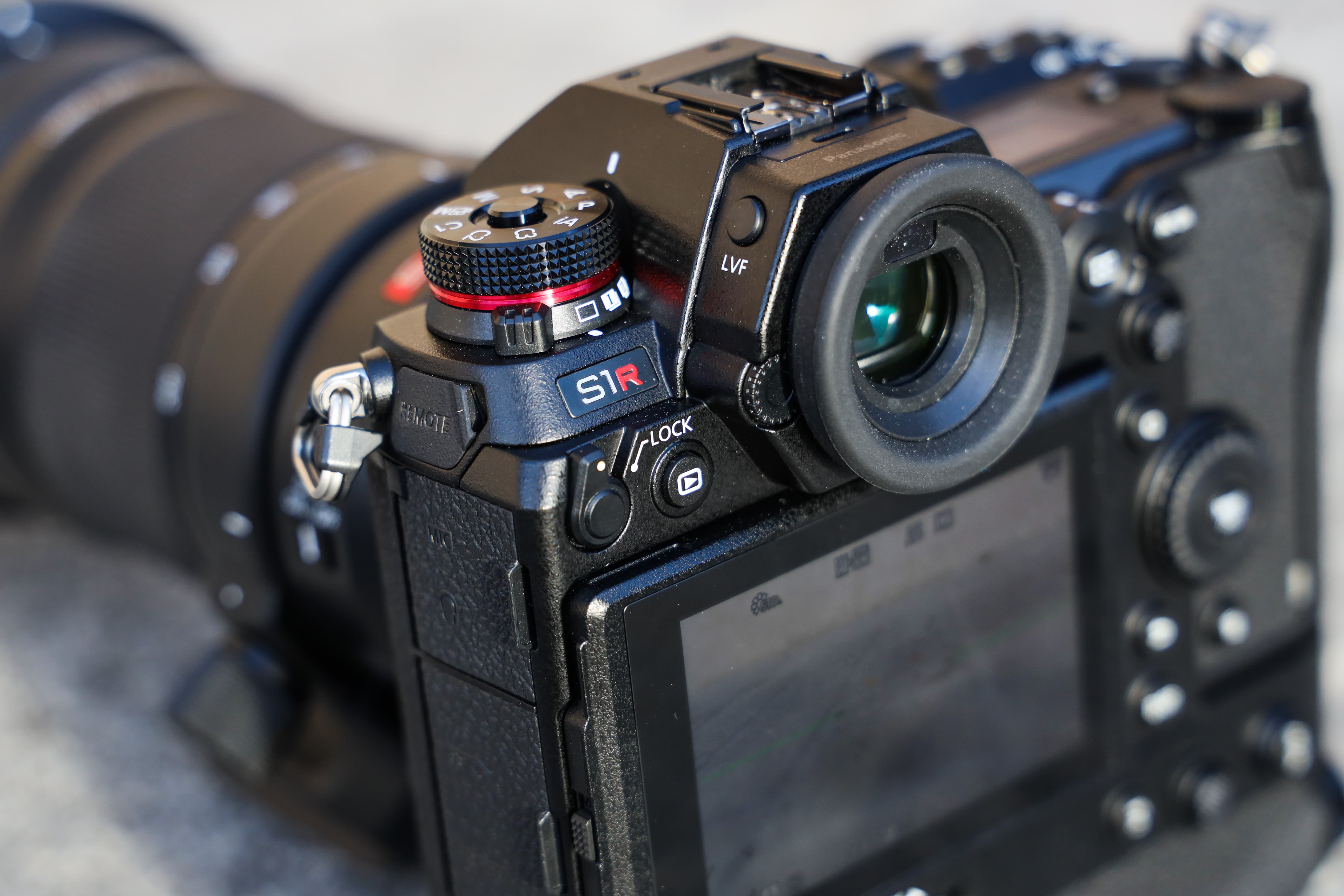
In this view the lock lever is clearly on show, just to the left of the playback button. It can be used to prevent unintentional operation and the user can choose which functions it locks
Panasonic cameras like the Lumix GH5 and Lumix GH5S and have gained a very strong reputation among leading videographers around the world and the video specs of the S1/S1R continue in the same fashion and are bound to impress. Line-input is supported by a 3.5mm mic socket while audio can be monitored using the 3.5 mm headphone port. Advanced audio quality is also possible with Panasonic’s DMW-XLR1 microphone adapter, allowing professional microphones and XLR input sources to be connected.
The Lumix S1, which is more likely appeal to video shooters, allows video recording up to 4K 60/50p 4:2:0 in 8 Bit directly to an SD or XQD-card. In addition, 4:2:2 colour sampling can be output through HDMI and Panasonic will provide a software key to unlock the option to record 4K 60/50p 4:2:2 10 Bit via HDMI-output and 30p/25p/24p in 4:2:2 10 Bit internally later in the year.

The 3.5mm mic port positioned above the 3.5mm headphone socket
This software key upgrade will also bring V Log to the Lumix S1. While time-limitations apply to 4K/60p (29mins 59secs) and High-speed-footage (15mins), 4K/30p and Full HD video can be recorded without a time limit. Some users may also wish to take advantage of high speed video, with 2x slow motion at 60fps in 4K available, and up to 6x slow motion in Full HD with frame rates of up to 180fps.
The S1/S1R’s dual-card slots are both UHS-II compatible to handle the high data rates required. Panasonic has also made it public knowledge that compatibility with CFexpress will follow too. Bluetooth and Wi-fi connectivity options are both available to pair and transmit images to mobile devices, plus there’s a new Lumix Sync smartphone app that has been developed for seamless remote control of the camera and immediate transfer from the camera to a phone or tablet.
Viewfinder & Screen
Similarities between the S1 and S1R extend to the electronic viewfinder and touchscreen at the rear. These are the first models in the world to debut a 5.76-million-dot OLED EVF – a resolution that’s exceeds the 3.6-million-dot EVF units you get on Nikon’s Z-series cameras and also the 4.4-million-dot EVF on the Leica SL.

The Lumix S1/S1R has the highest resolution of any electronic viewfinder we’ve seen to date. Note the intuitive positioning of dials and AF area button within the AF mode switch just to the left of the AF-ON button
Panasonic claims this super high resolution, matched with a 10.000:1 contrast ratio makes for one of the clearest and detailed views of any camera – something I’ll offer more of a report on shortly. Other points of interest regarding the EVF are its maximum 120fps refresh rate, minimum lag time of 0.005secs and option to adjust the magnification between 0.7x, 0.74x and 0.78x.
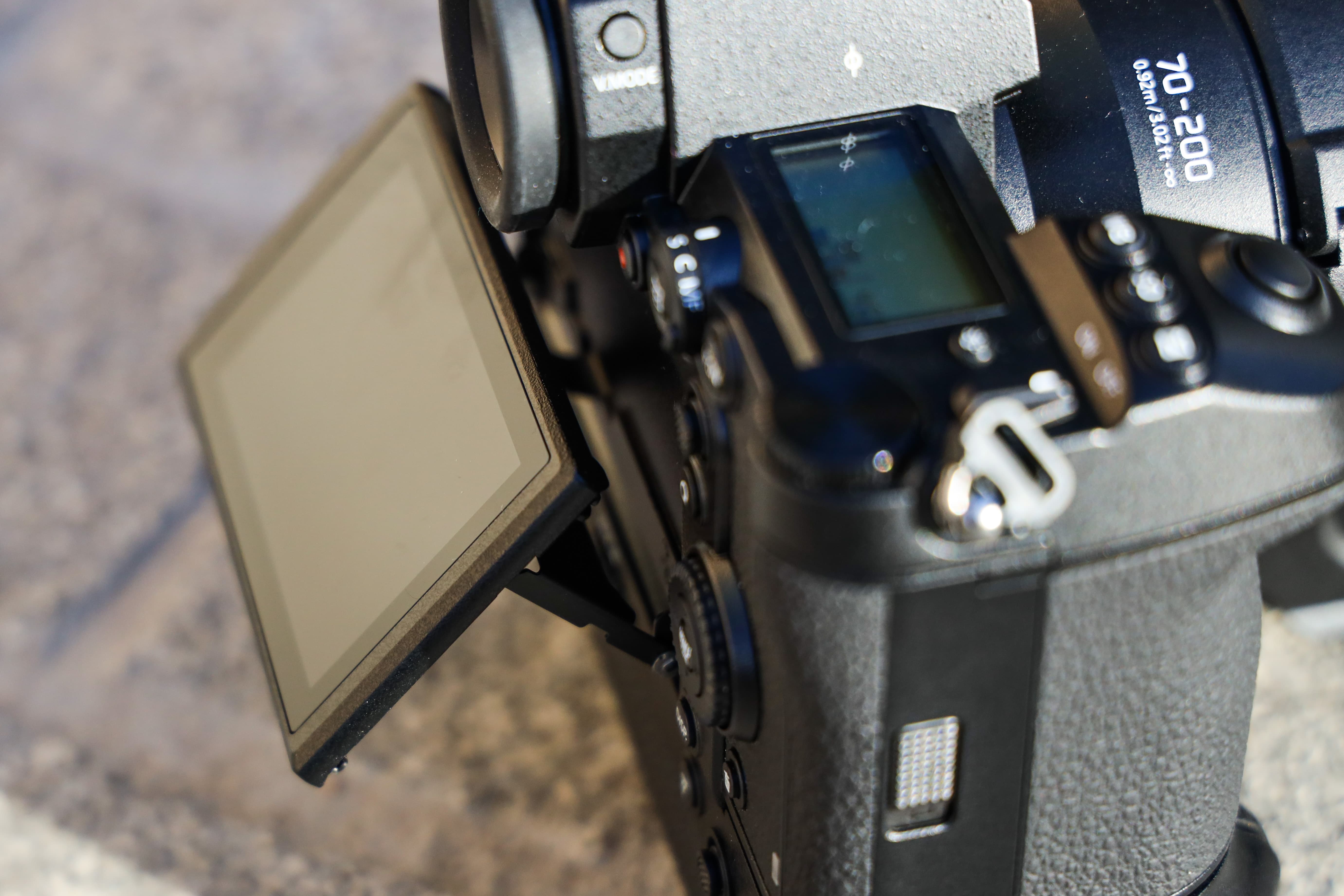
The 3.2in triaxial rear monitor is similar in the way it moves to those we’ve witnessed before on high-end Fujifilm X-series cameras such as the Fujifilm X-T3
Just below the EVF the S1 and S1R is what Panasonic call their triaxial tilt rear monitor that flips out for low or high angled viewing in both portrait and landscape orientation. It’s very similar to the type of three-way tilt screens we’ve seen on Fujifilm X-series cameras, requiring a small button to be depressed at the side to pull the screen out and tilt it appropriately for high and low angle images in the portrait format.
It’s a screen that feels extremely robust and pushes back into the body reassuringly. As for the specs of the screen, it measures 3.2in, has a 2.1-million-dot resolution and supports full touchscreen control that’s integrated nicely with the main menu and quick menu.
Build & Handling
One of the many challenges faced by full frame mirrorless camera manufacturers is trying to squeeze a full frame chip inside a body that feels great in the hand, but not so small that it has an adverse affect on handling and operation. While we’re used to Panasonic’s Lumix G mirrorless cameras being quite small and lightweight, the S-series is quite the opposite and looks like a camera system on steroids when you compare it to full frame mirrorless offerings from the likes of Canon, Nikon and Sony.
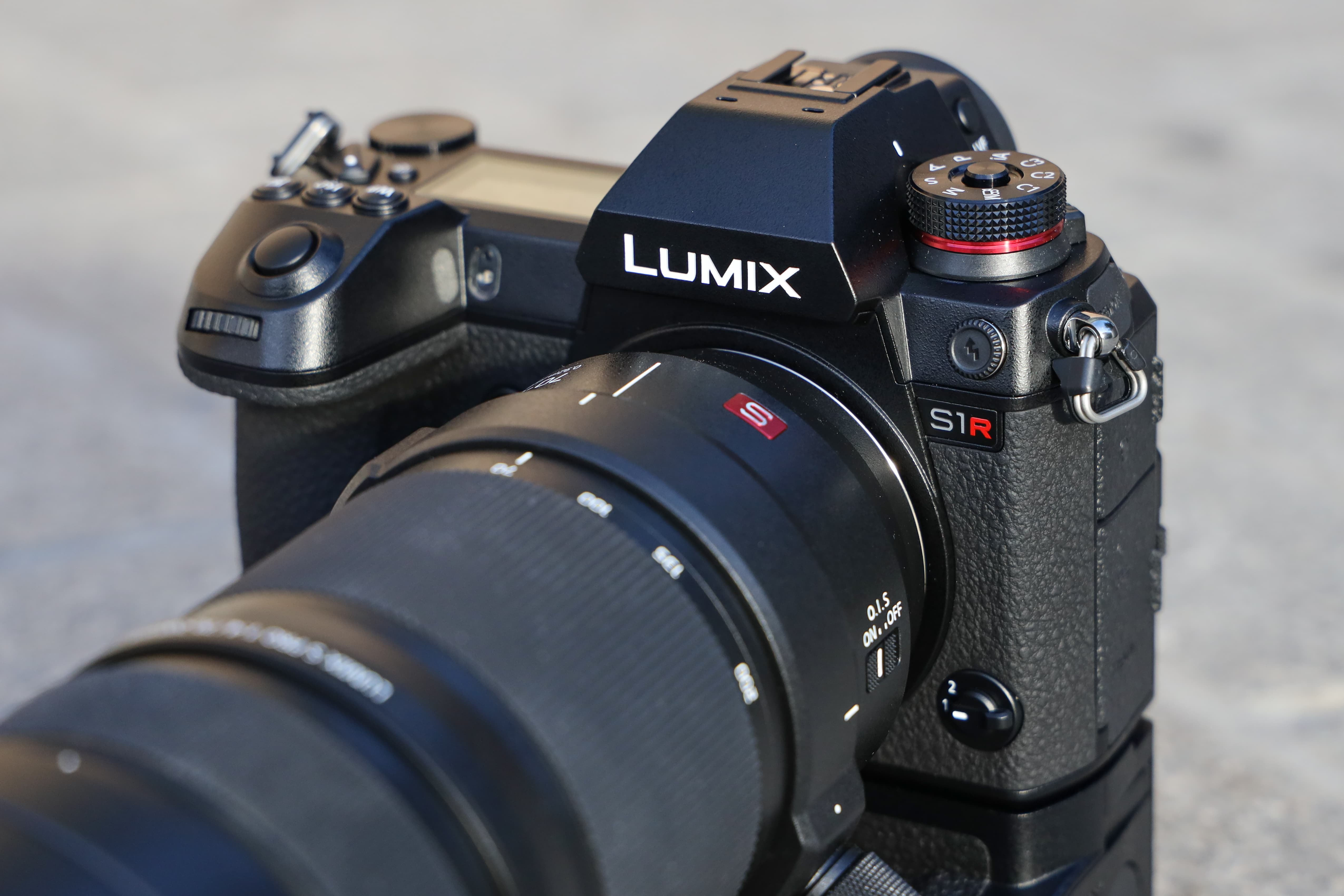
The S1/S1R has a big and well sculpted handgrip. Here the camera is attached to the optional battery grip, but this doesn’t have illuminated buttons like those on the back of the body
Designed to satisfy the high expectations of professionals as well as enthusiasts and anyone who takes their photography seriously, the S1 and S1R employs magnesium alloy die-cast front and rear panels, with seals at every joint, dial and button for maximum durability and robustness. Dust- and splash-proof, the S1/S1R can also operate at temperatures down to -10 degrees.
All the major buttons on both models illuminate in the dark and on the top plate of the camera you’ll find a large LCD panel that allows you to glance at all the key settings you could wish for. Shutter speeds range from 60 seconds to 1/8000sec using the mechanical focal-plane shutter, or 60 seconds to 1/32,000sec using the electronic shutter. The shutter unit itself is claimed to endure up to 400,000 actuations.

Like the high-resolution mode on the Lumix G9, a shutter delay can be setup so the high resolution mode isn’t affected by triggering the shutter. Motion blur, such as greenery blowing in the wind in landscape scenes, can be counteracted by setting motion blur processing to Mode 2
In the hand the S1 and S1R feel considerably larger and heavier than the most recent full-frame mirrorless releases from Canon and Nikon. Up against Sony A7-series cameras such as the A7 III, the Lumix S1/S1R is a bit bigger. While those coming from full-frame DSLRs will be accustomed to the size and weight of a bigger camera, people looking for a small, lightweight mirrorless system will want to take into account that there are other full frame mirrorless systems out there for similar or less money.
The size and weight difference between the Lumix S1R and the Canon EOS R and Sony A7 III was very noticeable during my hands on shooting experience. This is offset to some extent by an excellent handgrip that’s beautifully sculpted. Buttons and dials are well spread apart and will be familiar to anyone who’s used Lumix G cameras before, while the directional joystick supports quick repositioning of the AF point, albeit rather sensitive to light thumb movements.

The Lumix S1/S1R inherit the Fn Lever from the Lumix G9, which once again is positioned at the front lower corner of the body. The lens release button is located on the opposite side
As well as an operational lock lever that can be customised, the S1/S1R inherits the Fn Lever from the Lumix G9 that can be allocated to no fewer than 20 shooting functions. Another benefit is being able to view the remaining battery level as a percentage to give you a more accurate understanding of how much power remains.
Panasonic L-mount lenses
Initially there will be three lenses available for Panasonic’s S-series cameras based on the Leica L-mount, these being the Lumix S Pro 50mm f/1.4 (£2,299.99), Lumix S Pro 70-200mm f/4 O.I.S (£1749.99) and Lumix S 24-105mm f/4 MACRO O.I.S (1,299.99).
The Lumix S Pro 50mm f/1.4, with its focal length considered ‘standard’ for the full frame format, features an optical construction made up of 13 elements in 11 groups. To counteract chromatic aberrations, 2 aspherical lenses and 3 extra-low dispersion lenses are used in its design and unlike many 50mm prime lenses that have 9 aperture blades, it differs in that it has an 11-bladed iris in an attempt to produce the most attactive bokeh possible. An aperture ring is also present, while switching to manual focus requires the focus ring to be snapped forward. Priced at £2,299, it works out £50 less than the Canon RF 50mm f/1.2L USM (£2,349.99).
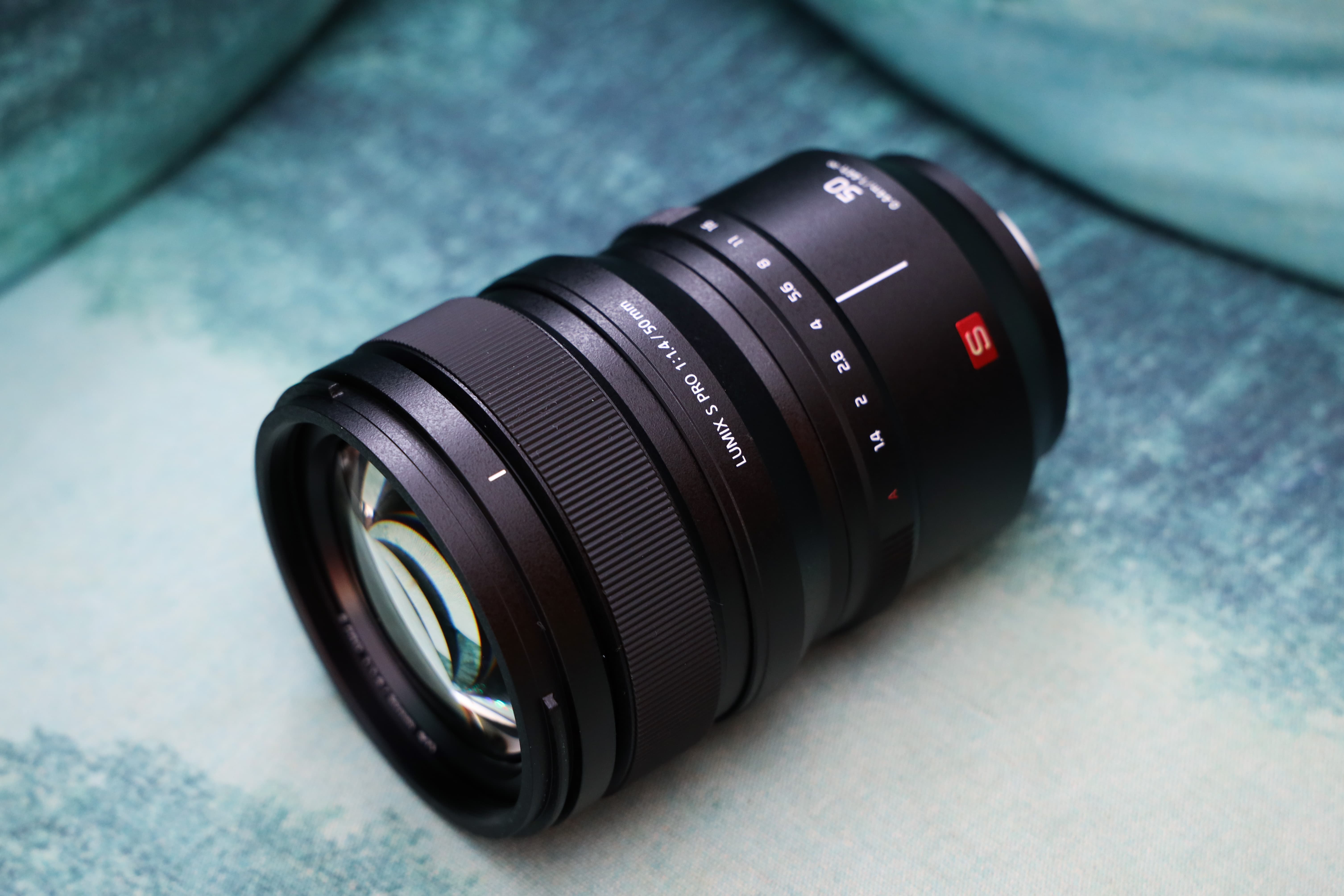
The Lumix S Pro 50mm f/1.4 has a manual aperture ring and is the most expensive Lumix S Pro lens for the system so far at £2,299.99
As for the Lumix S Pro 70-200mm f/4 O.I.S, this telephoto optic is compatible with Panasonic’s 5-axis Dual I.S II system, offering up to 6 stops of image stabilisation. Construction wise, it combines 23 elements in 17 groups with 9 aperture blades and features a single aspherical lens and 3 extra-low dispersion lenses to minimise chromatic aberrations and maximise sharpness. Like the Lumix S Pro 50mm f/1.4, manual focus is activated by snapping the manual focus ring forward.
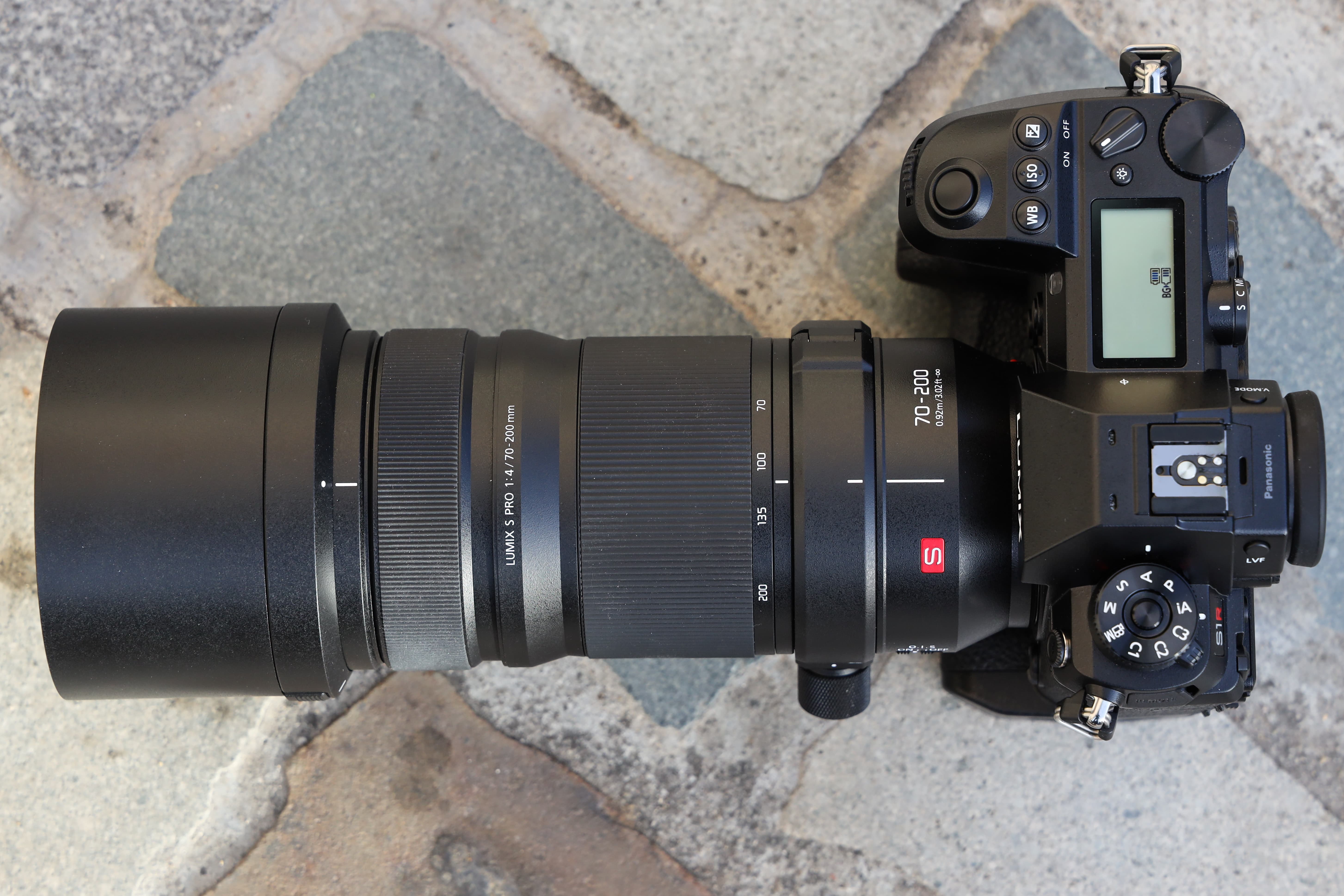
A top view of the Lumix S Pro 70-200mm f/4 O.I.S mounted to the Lumix S1R
Last but not least is the kit lens – the Lumix S 24-105mm f/4 macro O.I.S. This general purpose standard zoom with its 0.5x magnification and minimum focus distance of 30cm teams up with S-series cameras to offer up to 6 stops of image stabilisation. The lens comprises 16 elements in 13 groups and uses two aspherical lenses and two extra-low dispersion elements.
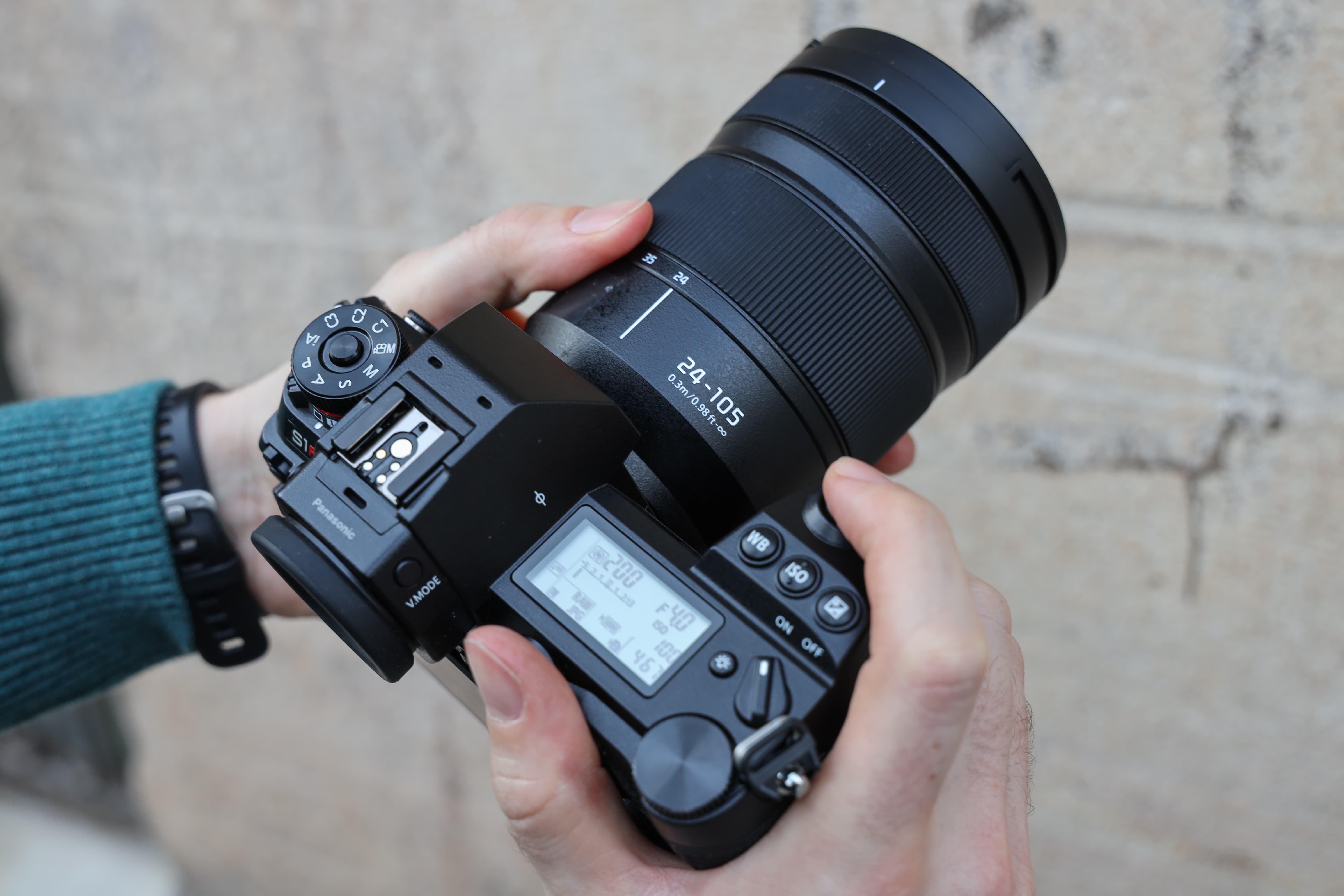
The Lumix S1R with Lumix S 24-105mm f/4 macro O.I.S
Among the ten or more lenses due to be released by 2020 are a 24-70mm f/2.8, 70-200mm f/2.8 and 16-35mm f/4. Two teleconverters (1.4x and 2.0x) will be following too, along with a super telephoto lens, two primes and a macro lens.
First Impressions
Panasonic’s decision to enter the full-frame mirrorless market got a lot of people talking last year. Although we’ve only had a few hours of shooting with a pre-production sample of a Lumix S1R, it’s enough to make a few early comments on what we can expect to come when the final review samples arrive in a few weeks time.
A lot has already been mentioned about the size of the system and while it’s not small or compact, what we must not forget is that there’s always the Lumix G series for those who want a camera and lens system that’s light and conveniently sized. One thing Panasonic never wanted to do was cannibalise its own G-series with the S-series. The S-series is the next level up and rather than appealing to the average consumer, Panasonic is looking to tempt the most serious of photographers, as well as demanding pros, across to their new system. This is no easy task however, especially after all the superb full-frame offerings that were announced during 2018.
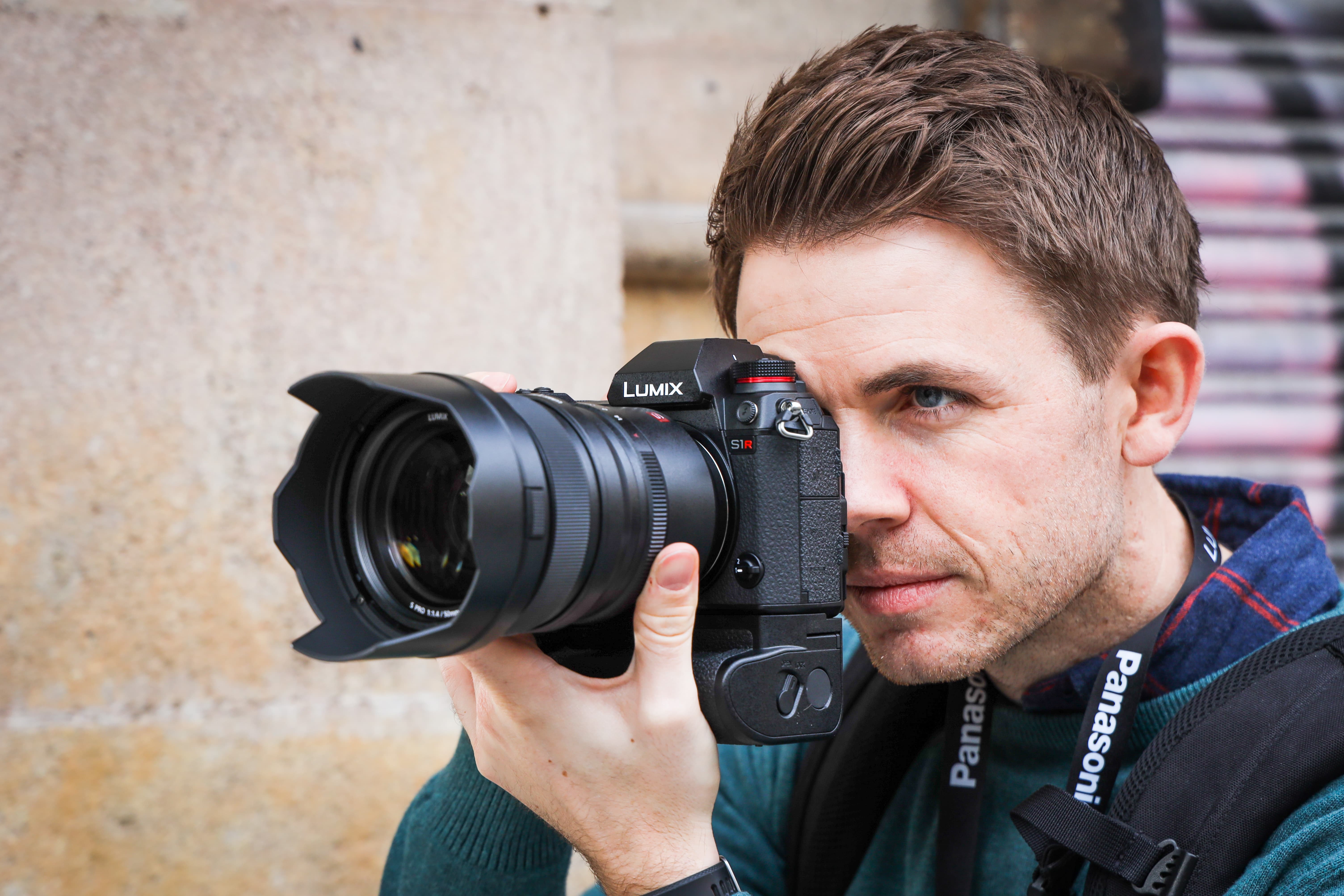
AP’s Michael Topham getting to grips with the Panasonic Lumix S1R in Barcelona
The standout feature that actually made me say the word ‘wow’ out loud is the EVF. It’s sensationally sharp, refreshes quickly and offers a first class viewing experience. I’d have no hesitation in saying it’s the best EVF I’ve ever used. First impressions of the autofocus is that it’s responsive too. It did a fine job of tracking and keeping apace with moving people and cyclists in the street. Furthermore, eye detection in portrait scenes rarely left me disappointed and the only time the camera really showed any sign of hesitation was in an extremely dark low-light scene.
High Resolution mode impressed too, especially when shooting handheld. It’s made so easy to use that landscape photographers and those who want to capture the finest level of detail can easily use it without always relying on their tripod. The huge 187-million-pixel files the Lumix S1R creates will fill up memory card space and hard drive space fairly quickly, but thanks to the speedy Venus image processor you’re not left waiting around in the field for too long for it to stitch the image together.

The Lumix S1R with the optional battery grip attached, which like the body is weather sealed
Ergonomically, the S1R is rather nicely laid out and in many respects feels like a bigger, beefier Lumix G9 – a mirrorless camera that fitted the hand extremely well . The grip is extremely comfortable and as you’d expect of a larger camera, it balances well when heavier lenses are attached. Photographers with large hands are likely to find that they prefer the handling of the S1/S1R than smaller mirrorless cameras like Sony’s A7-series. The weather sealing will also come into its own too when venturing off limits. The Lumix S1R certainly feels like it’s up to the task of surviving rigorous use, but it really needs a test in the wilderness to find out just how durable it is.
My lasting impression from using the Lumix S1R for a few hours is that it’s one very capable camera indeed and there’s much to like. There’s appeal to the S-series system, especially with the backing of Sigma lenses and Panasonic’s professional support, but I sense the hardest job for Panasonic moving forward is going to be getting the Lumix S1/S1R into professionals’ hands and convincing them that this new system is superior to what most pros and serious users are already using. In terms of price, the Lumix S1 and Lumix S1R are competitive, but again they have to be in a sector of the market that continues to grow at a rapid pace with lots of great alternatives already available.
We’ll bring you a full review of the Panasonic Lumix S1R as soon as our review sample arrives, which we’re expecting in the next few weeks.
Price and availability
The Panasonic Lumix S1 and Lumix S1R will be available to buy from 18th March 2019. The full breakdown of pricing is as follows:
- Panasonic Lumix S1 (body only) – £2,199.99/ €2,499.99
- Panasonic Lumix S1R (body only) – £3,399.99/ €3,799.99
- Panasonic Lumix S1 kit (with 24-105mm lens) – £2,999.99/ €3,399.99
- Panasonic Lumix S1R (with 24-105mm lens)– £4,199.99/ €4,799.99
- LUMIX S PRO 50mm f/1.4 – £2,299.99/€2,599.99 (Available from)
- LUMIX S PRO 70-200mm f/4 O.I.S – £1,749.99/€1,999.99 (Available from)
- LUMIX S 24-105mm f/4 Macro O.I.S – £1,299.99/ €1,399.99 (Available from)

